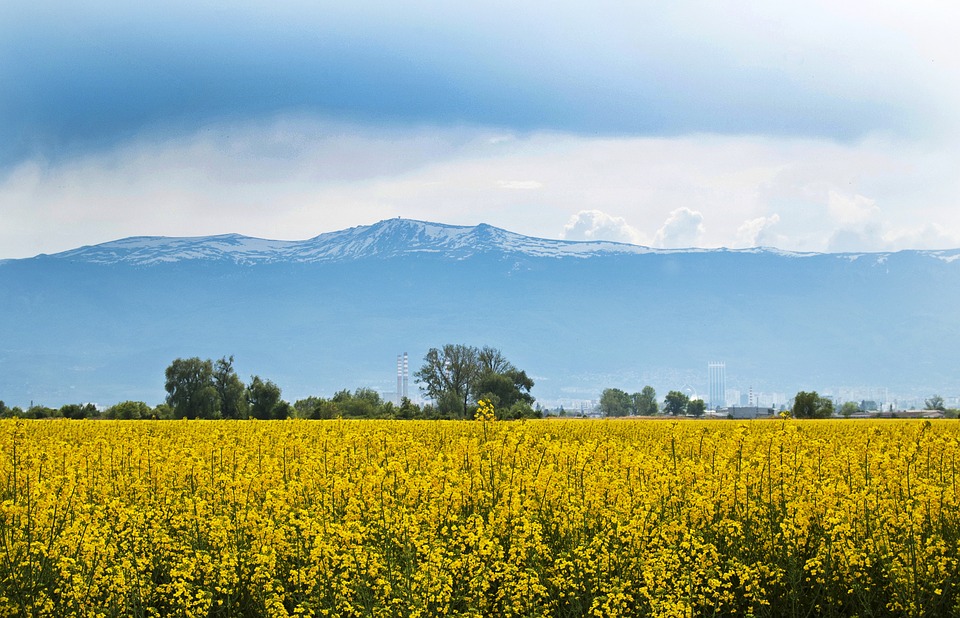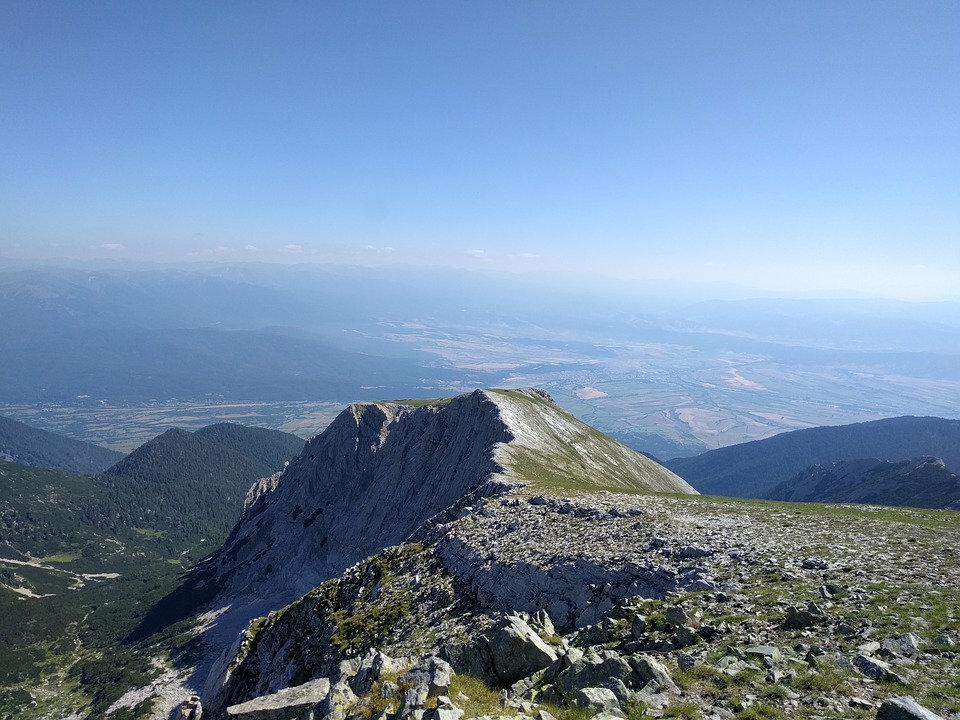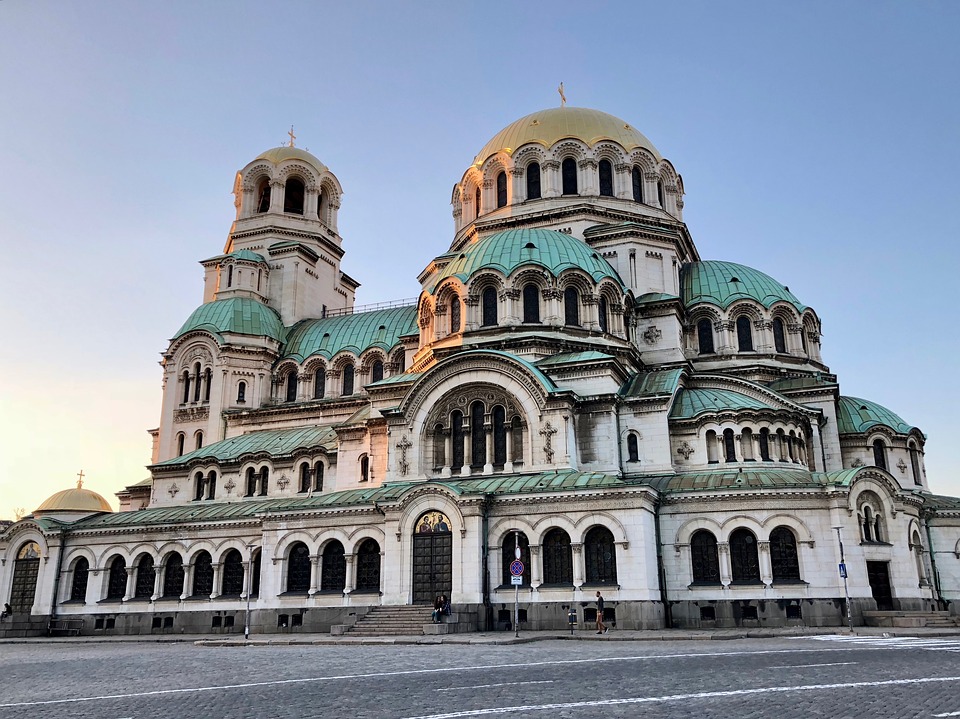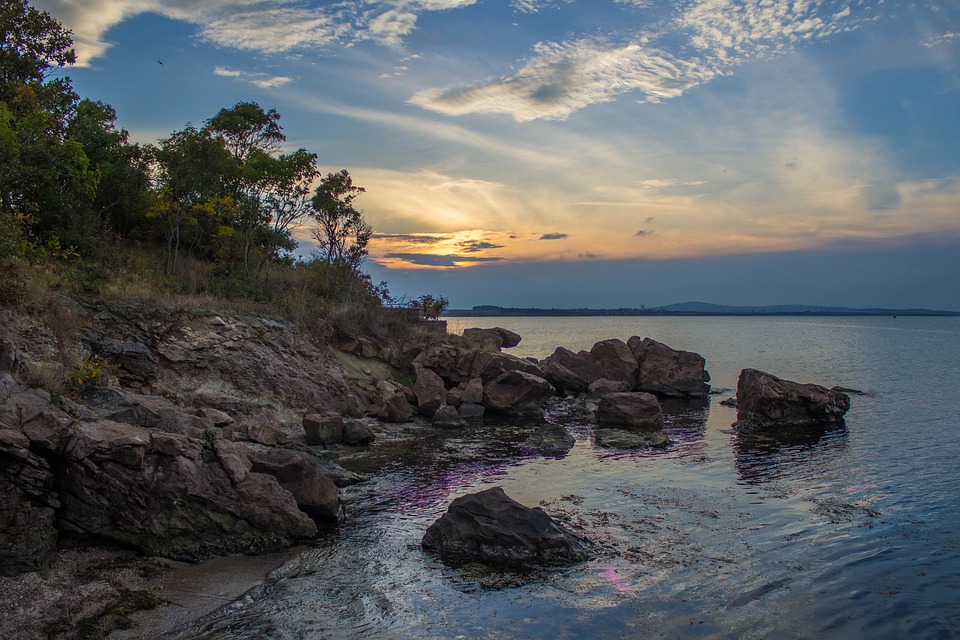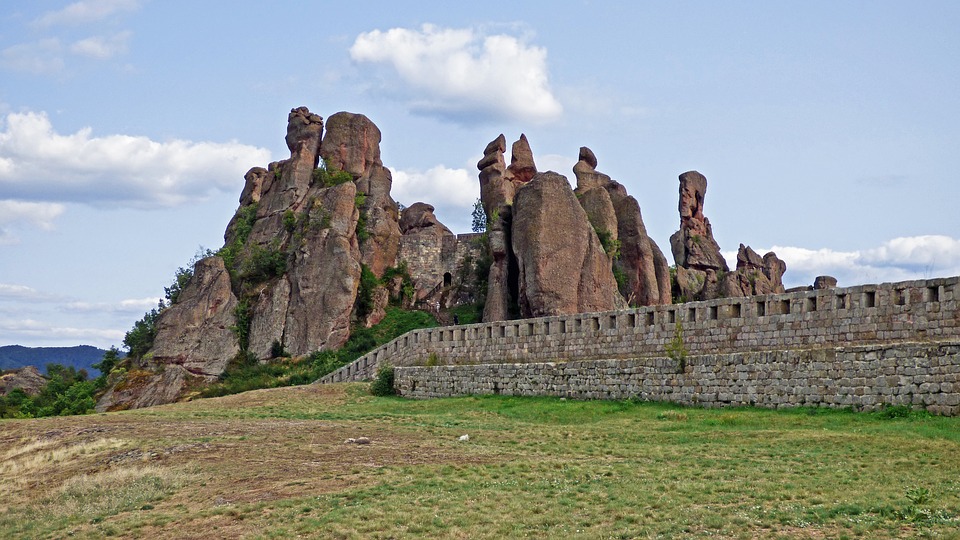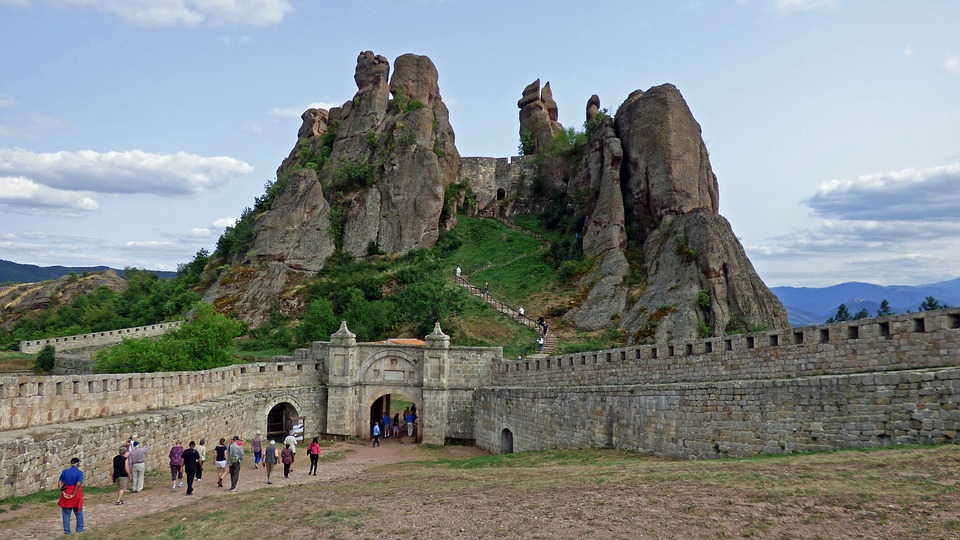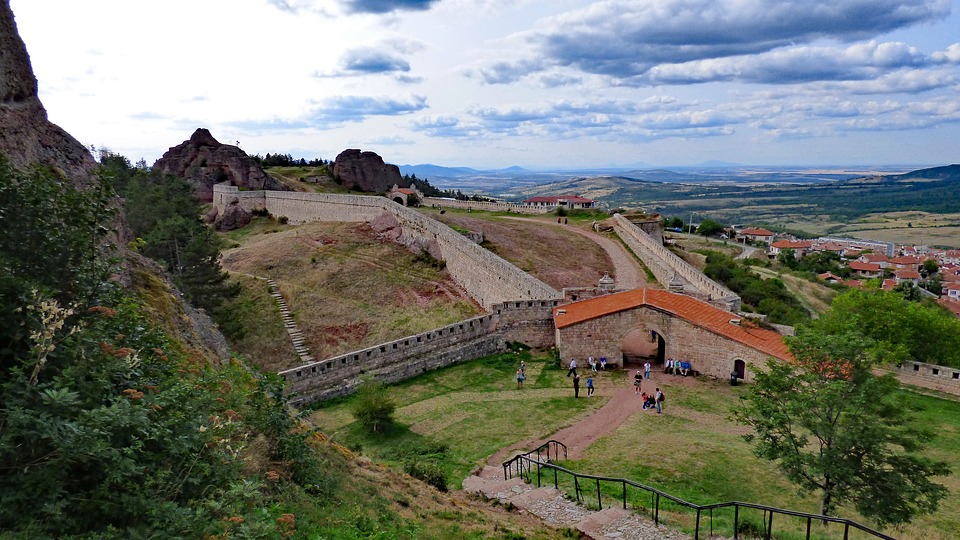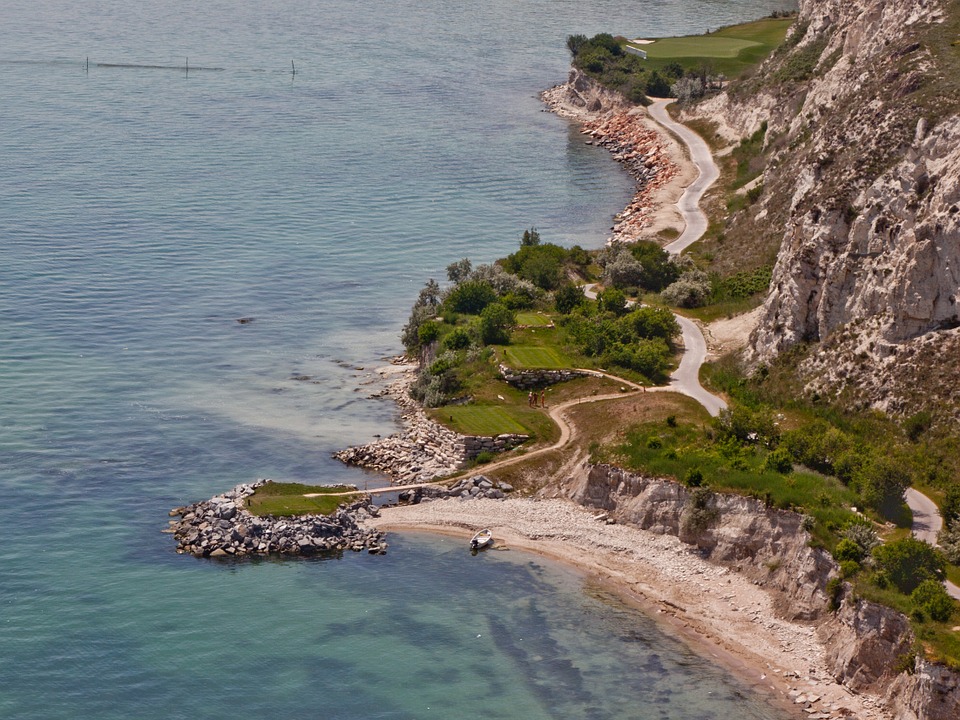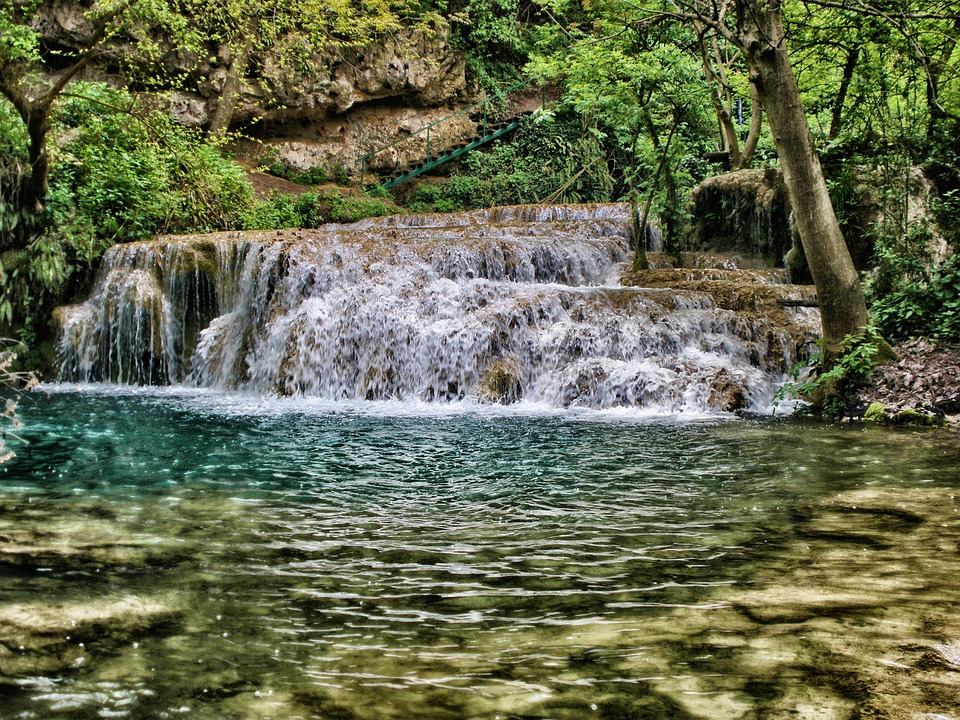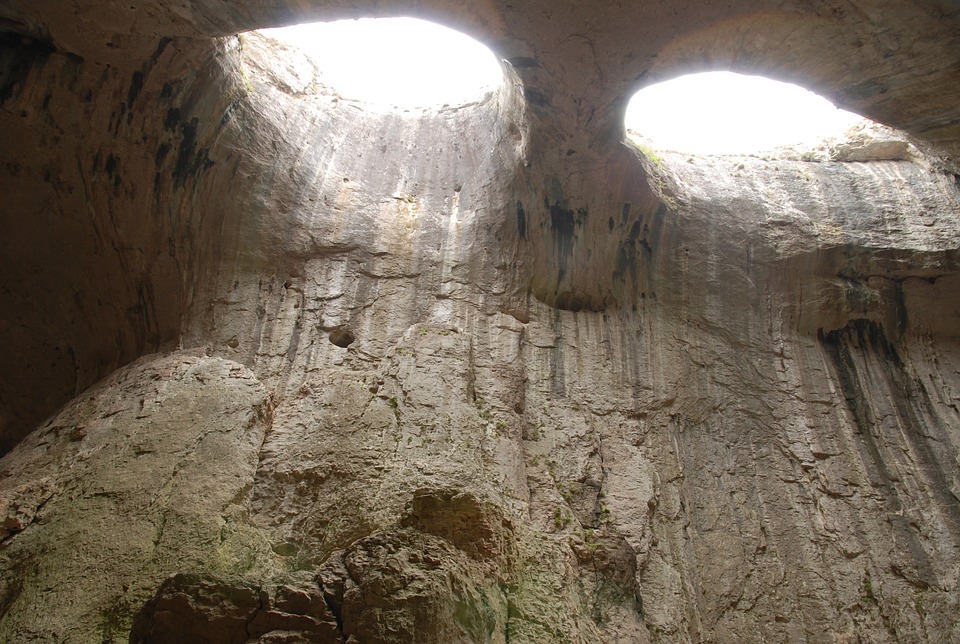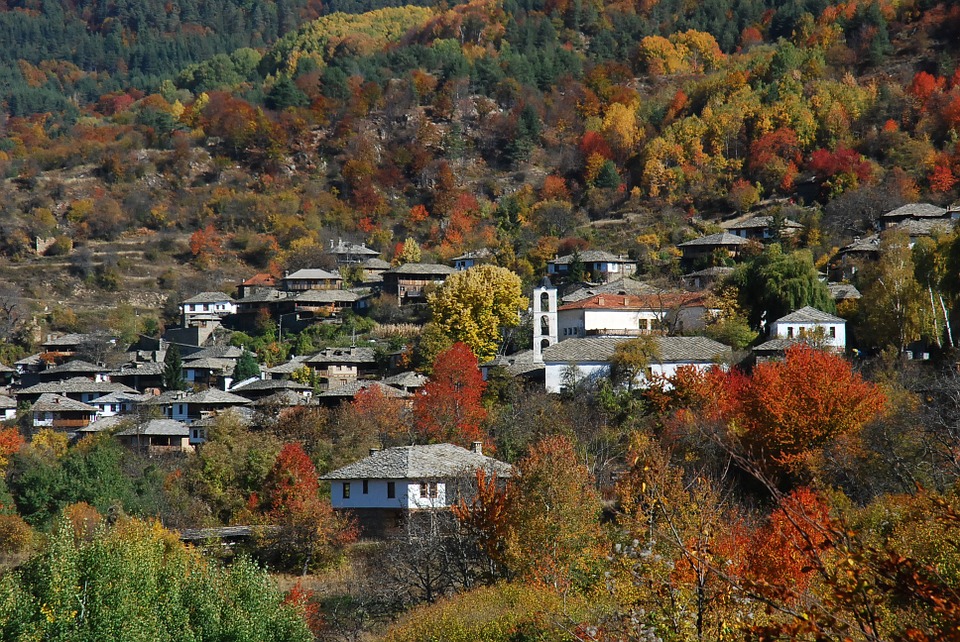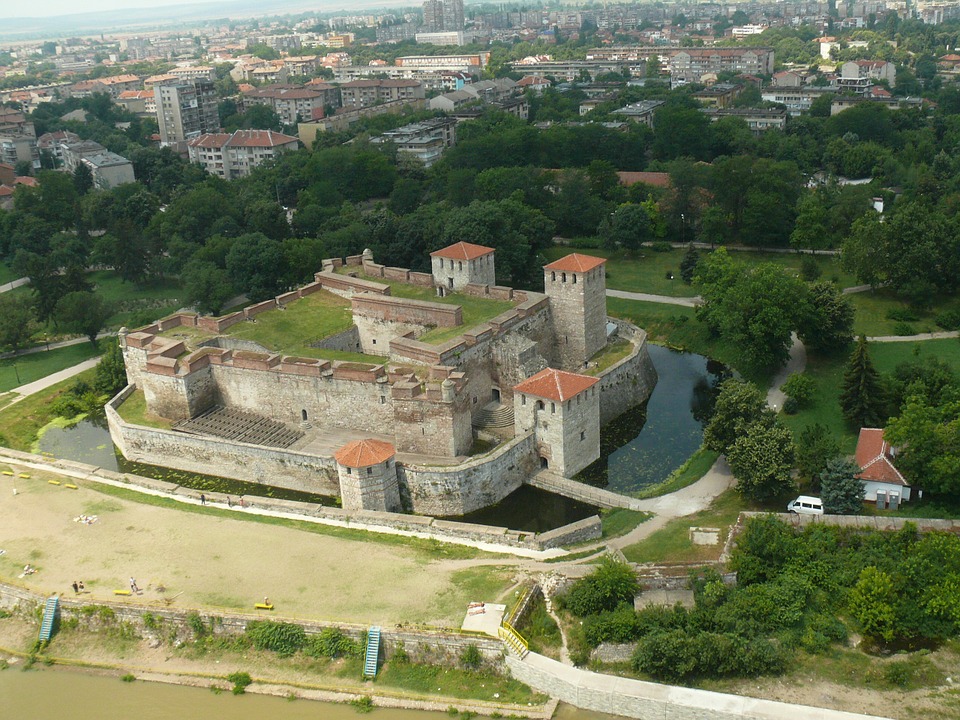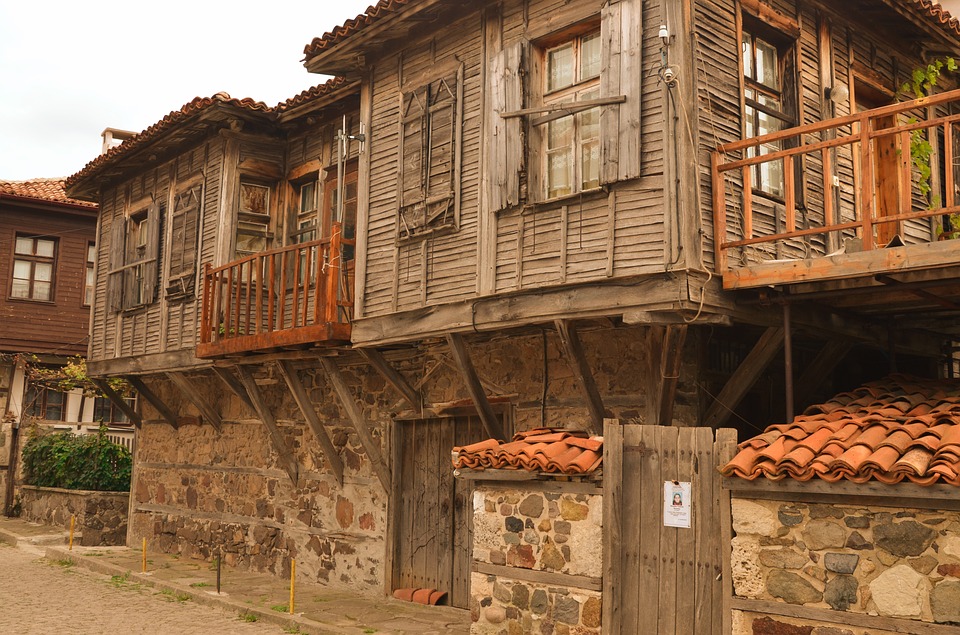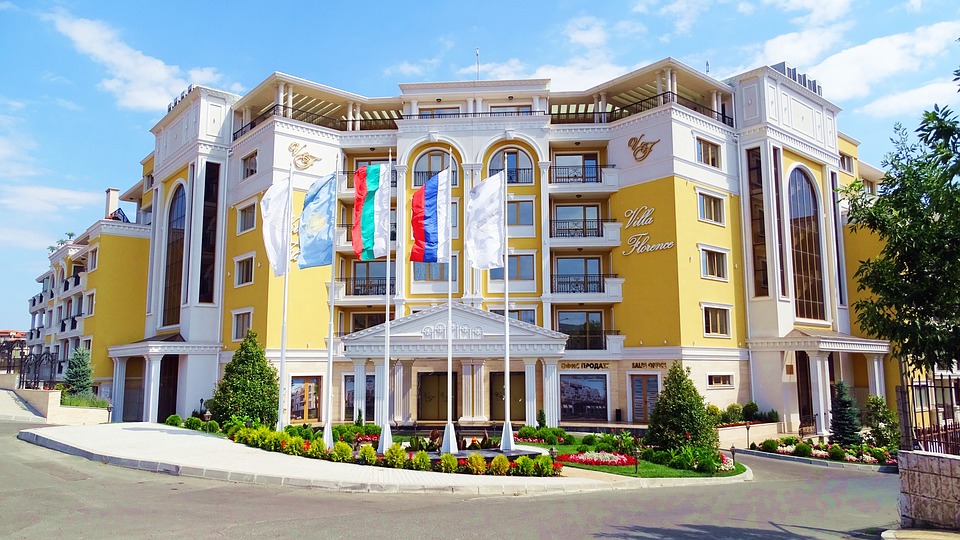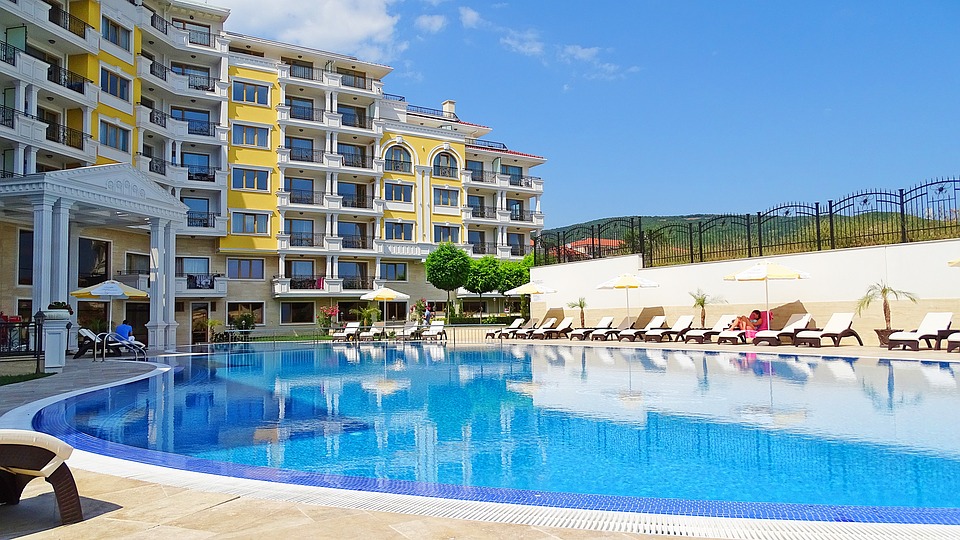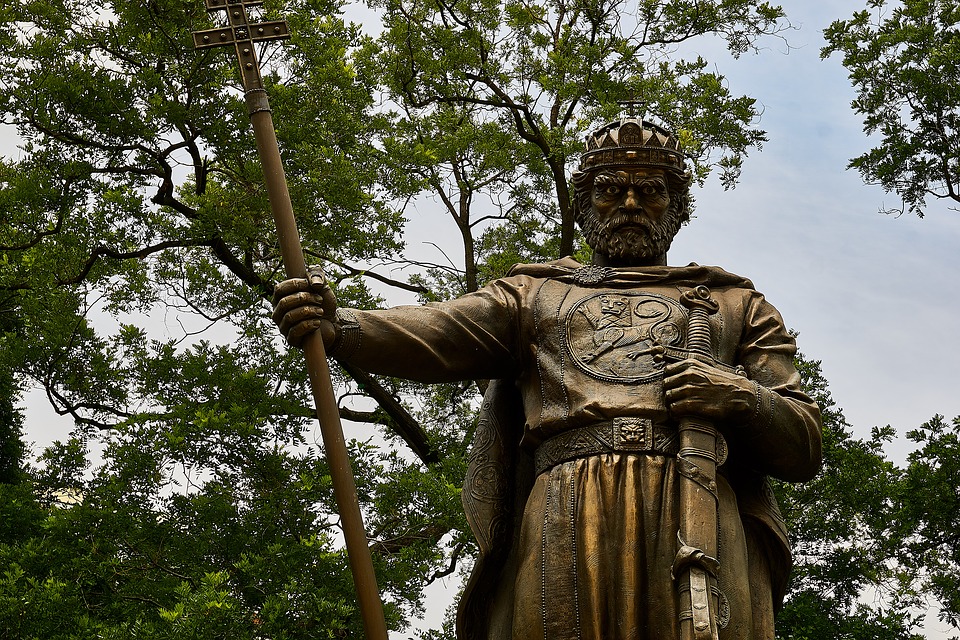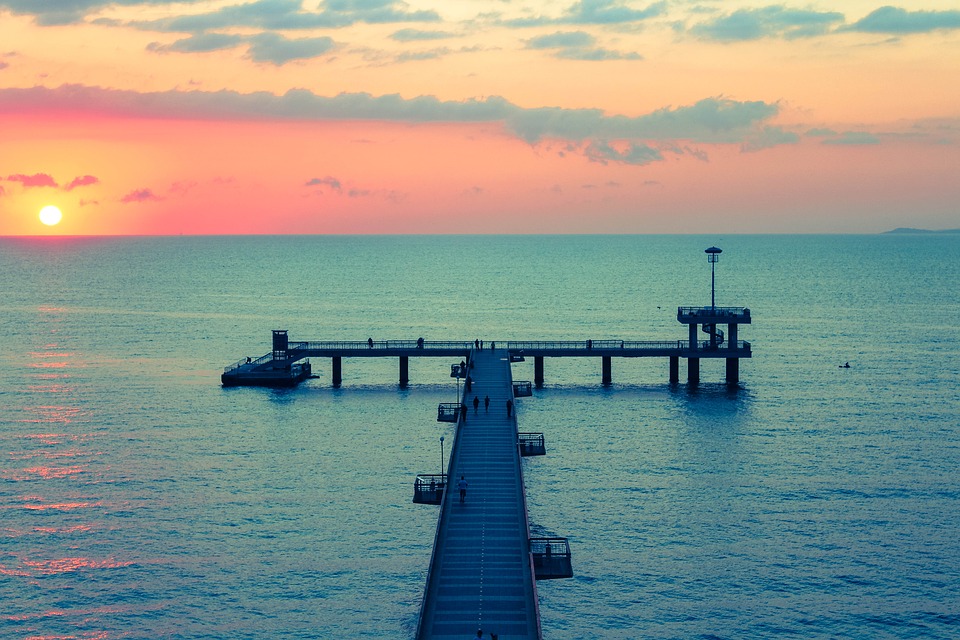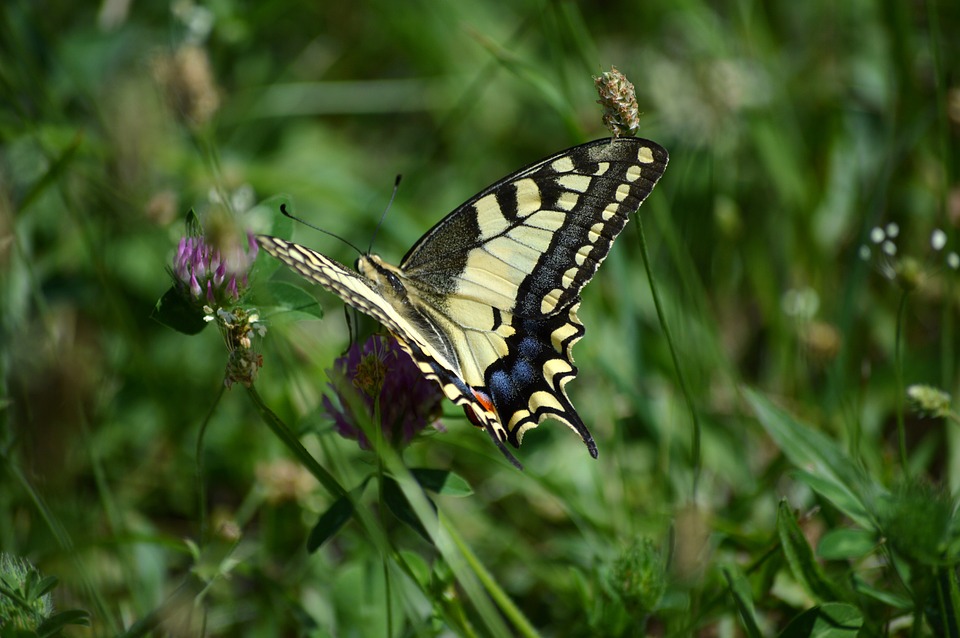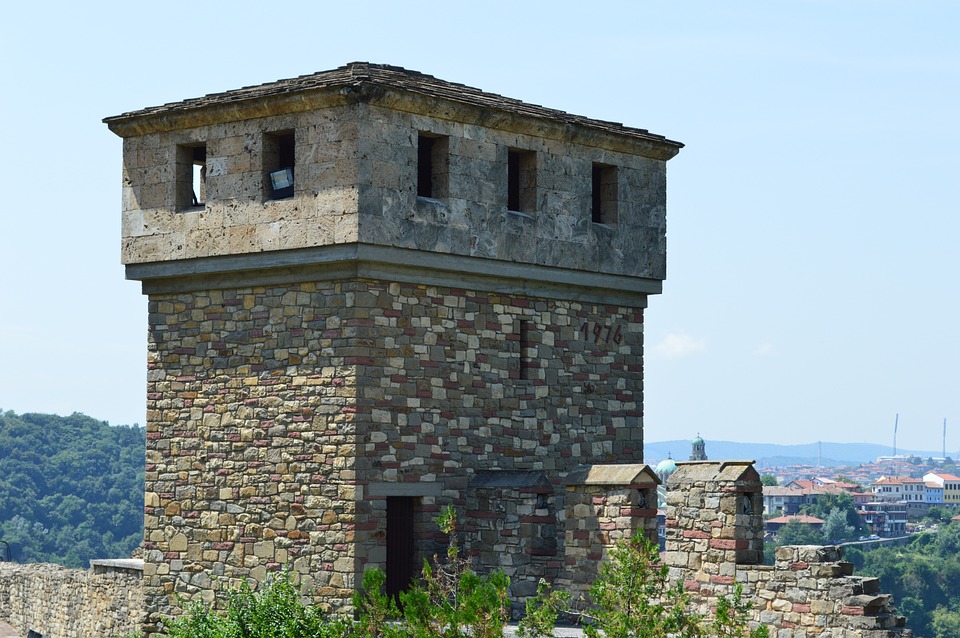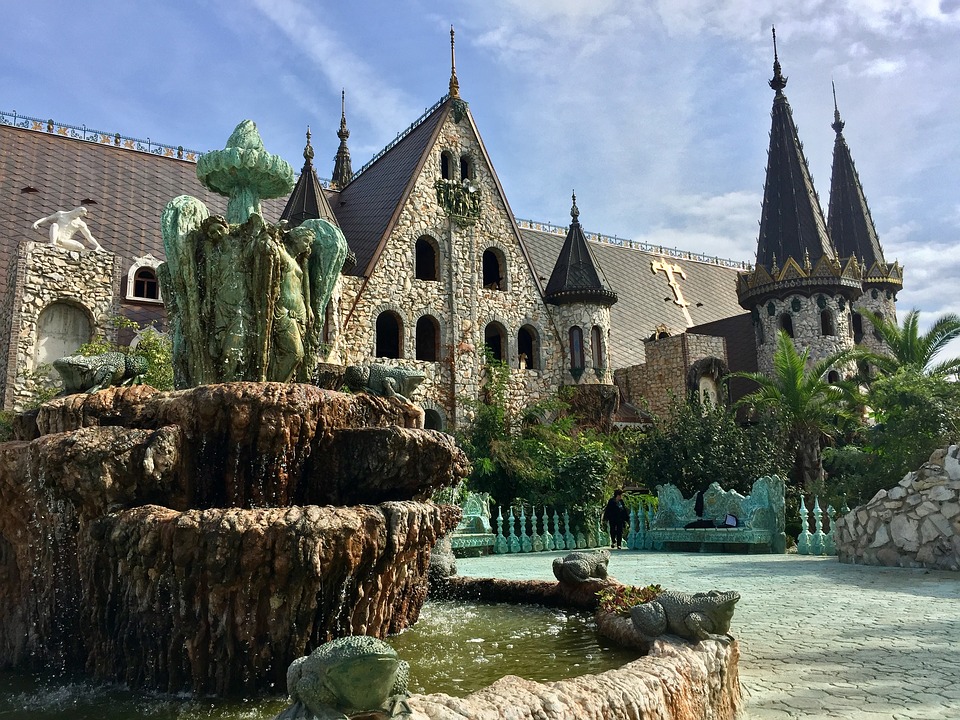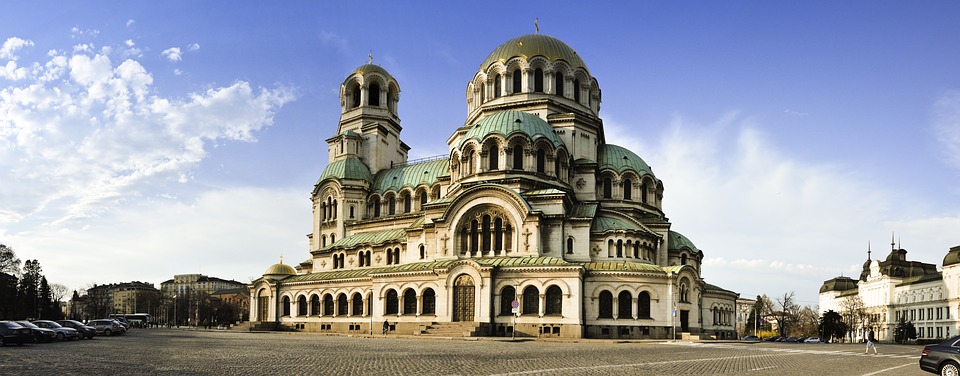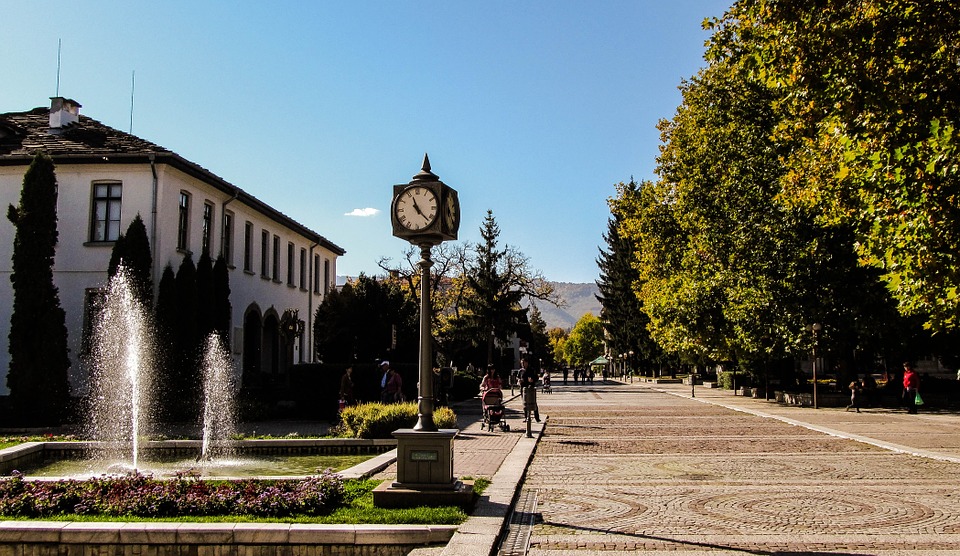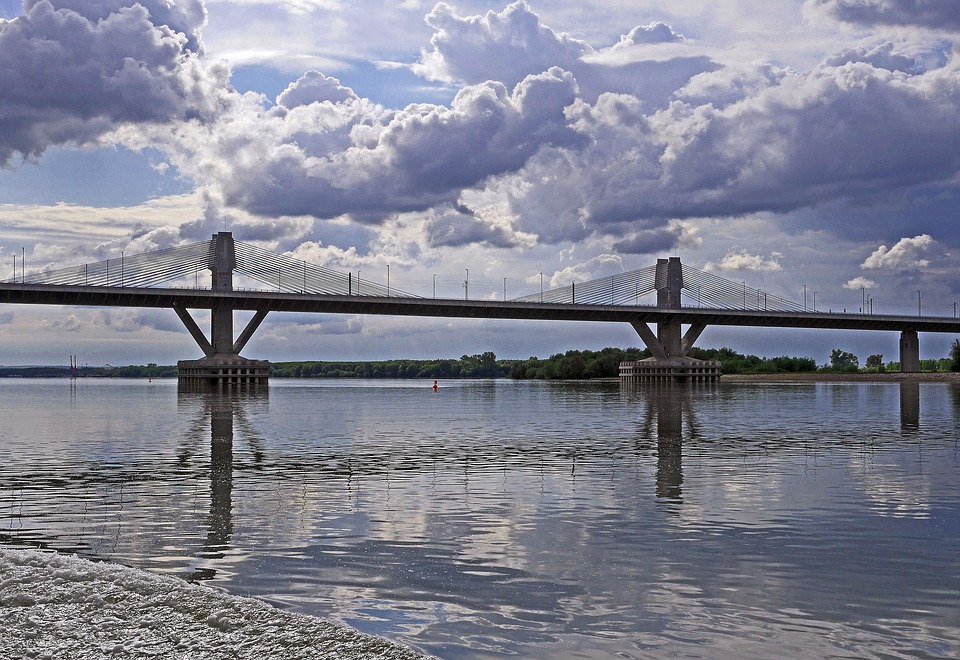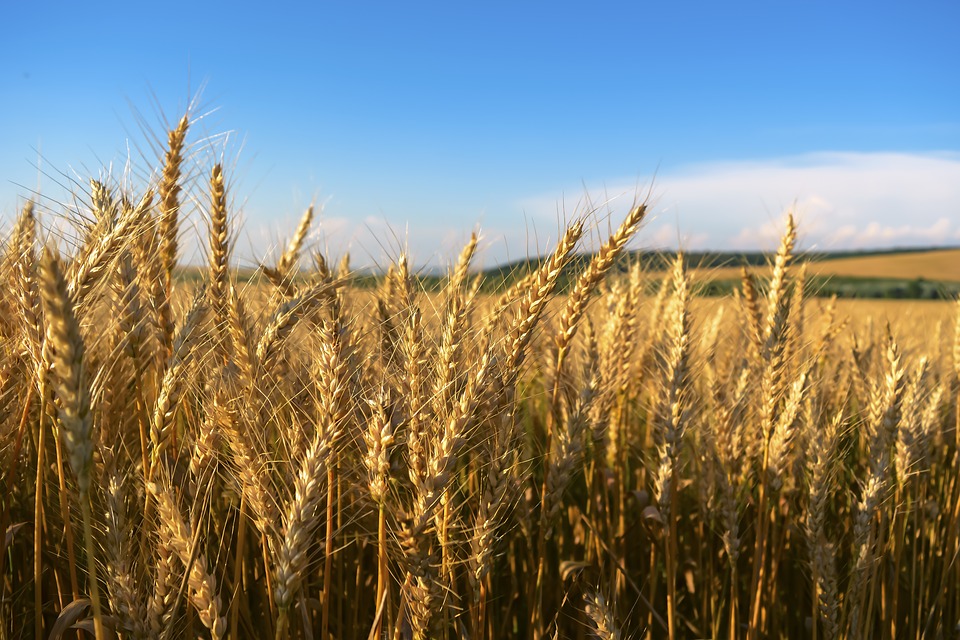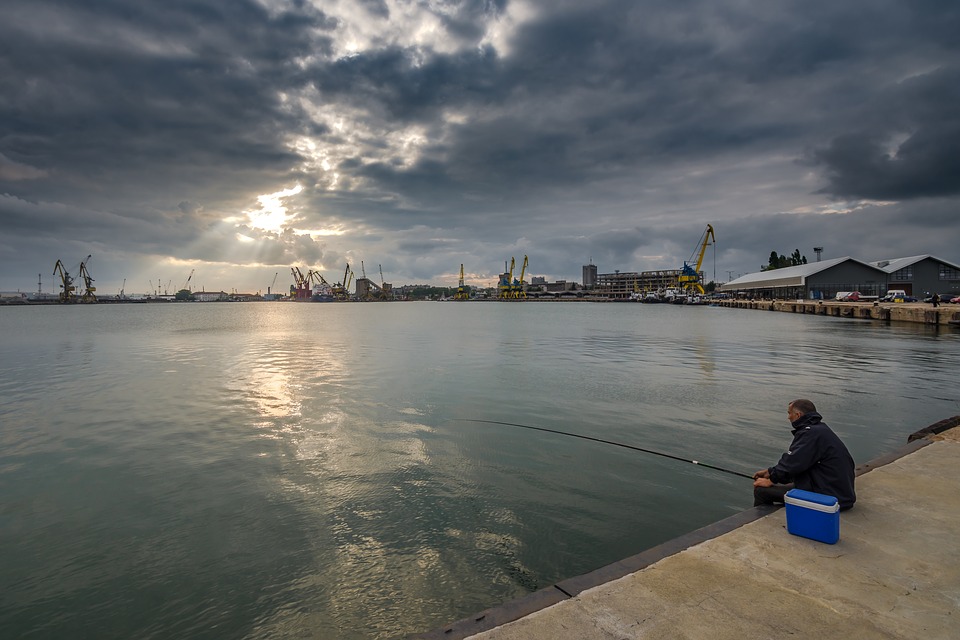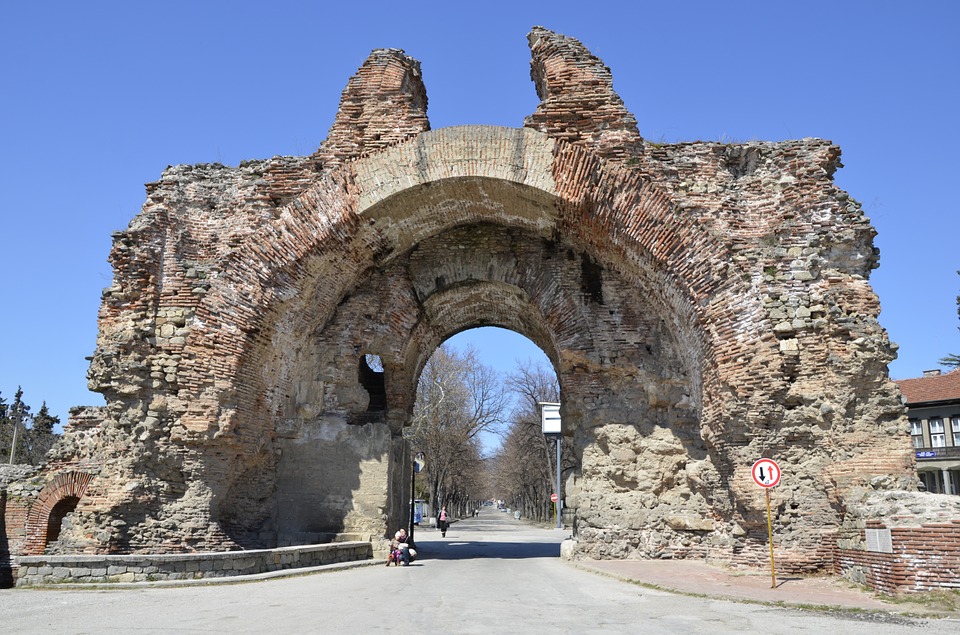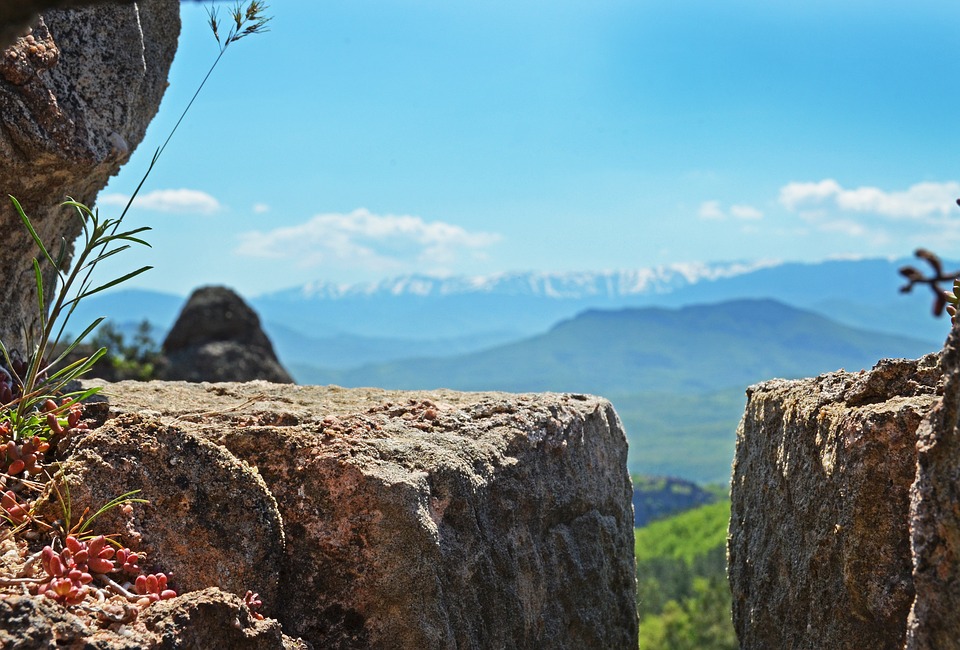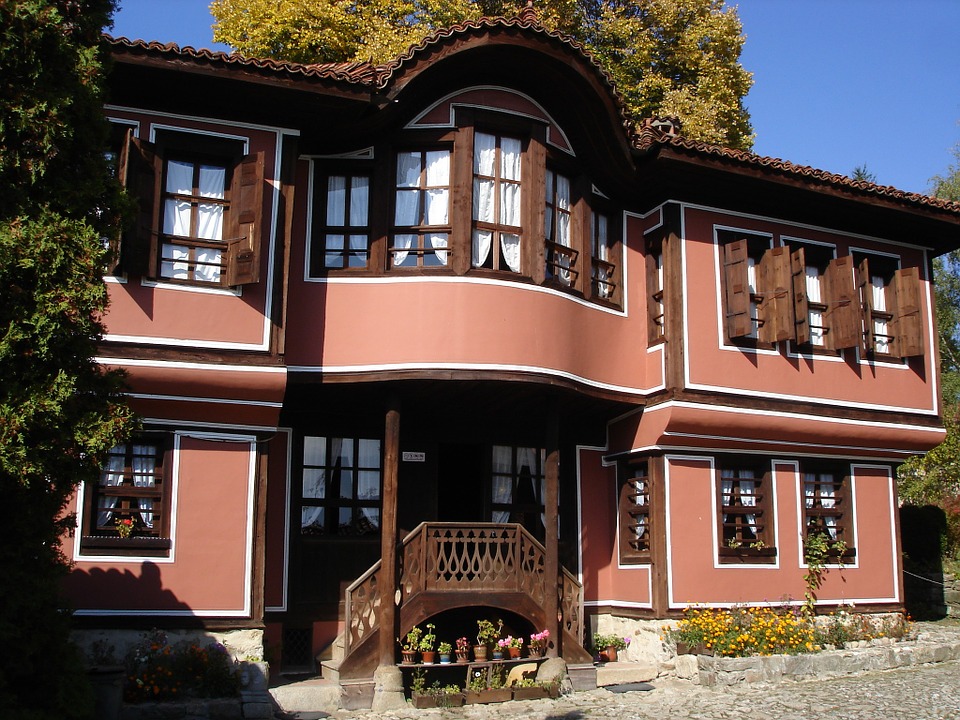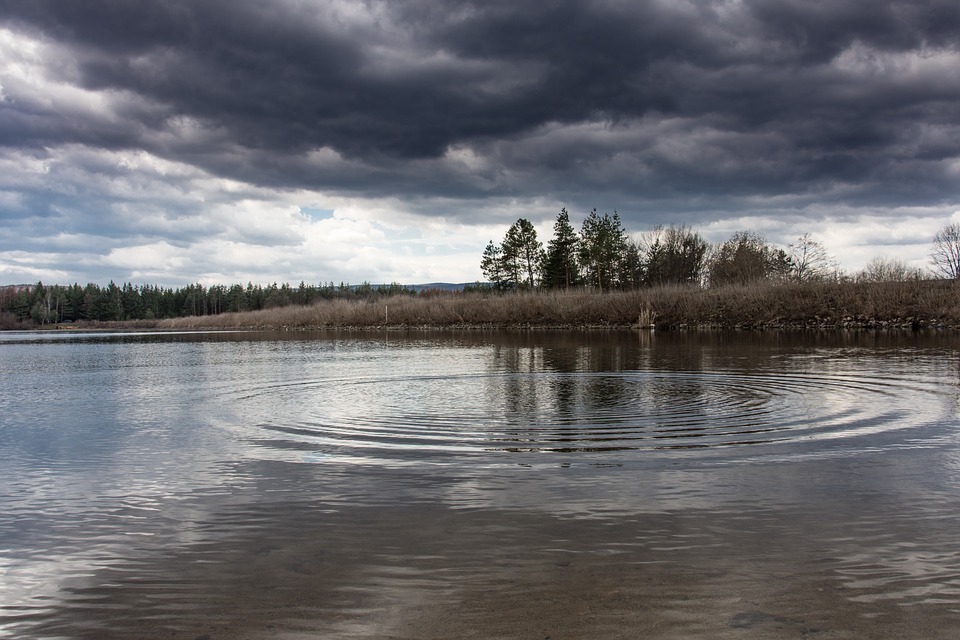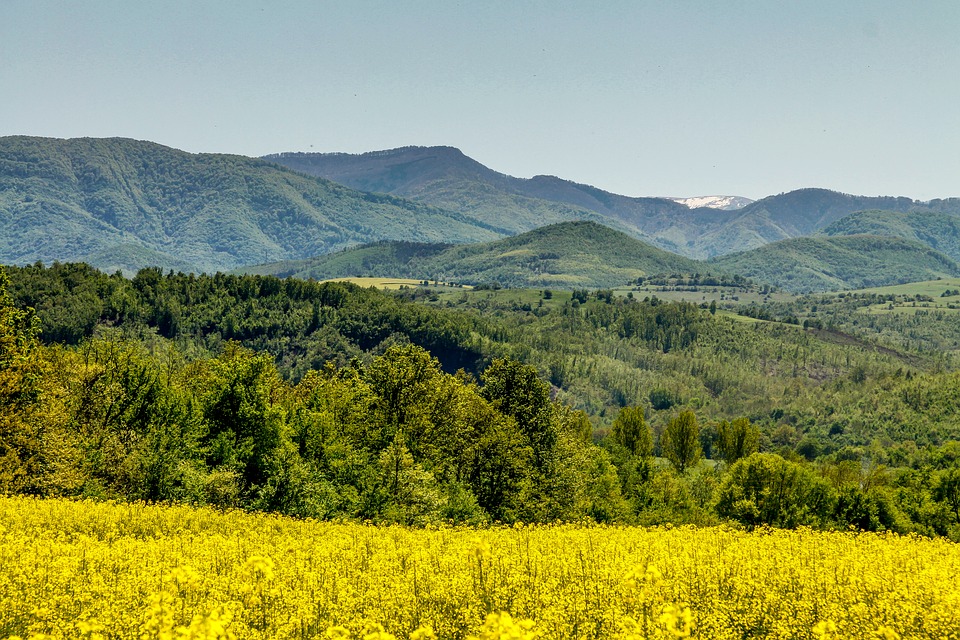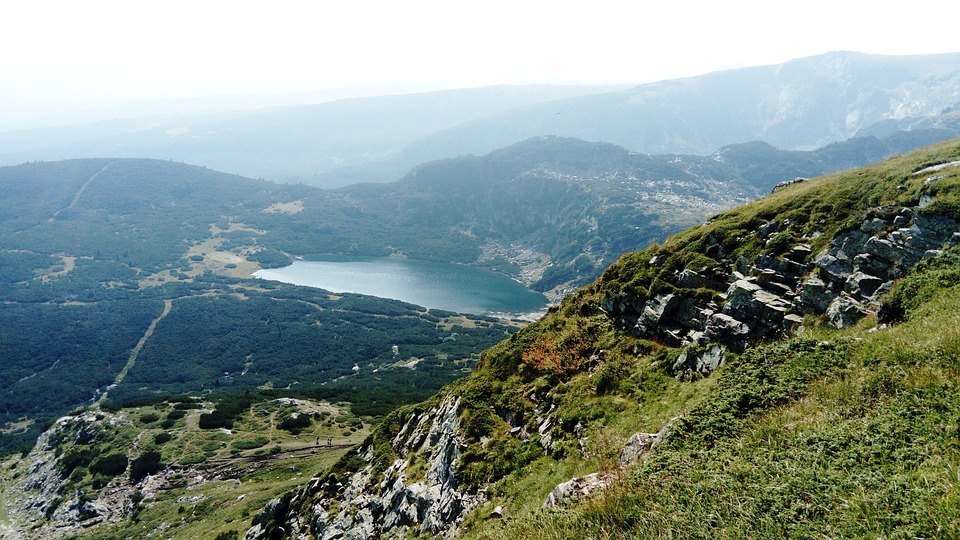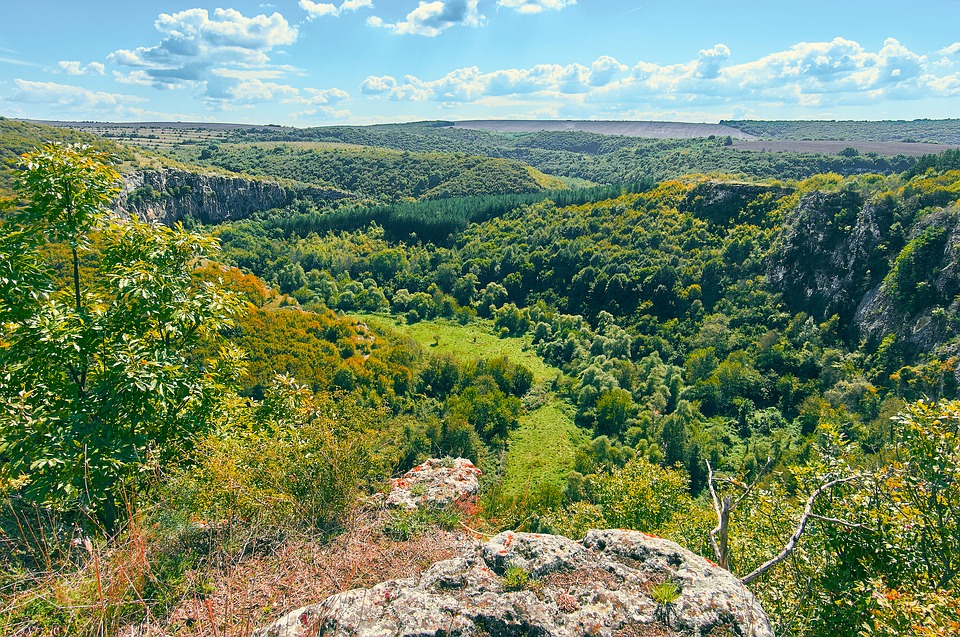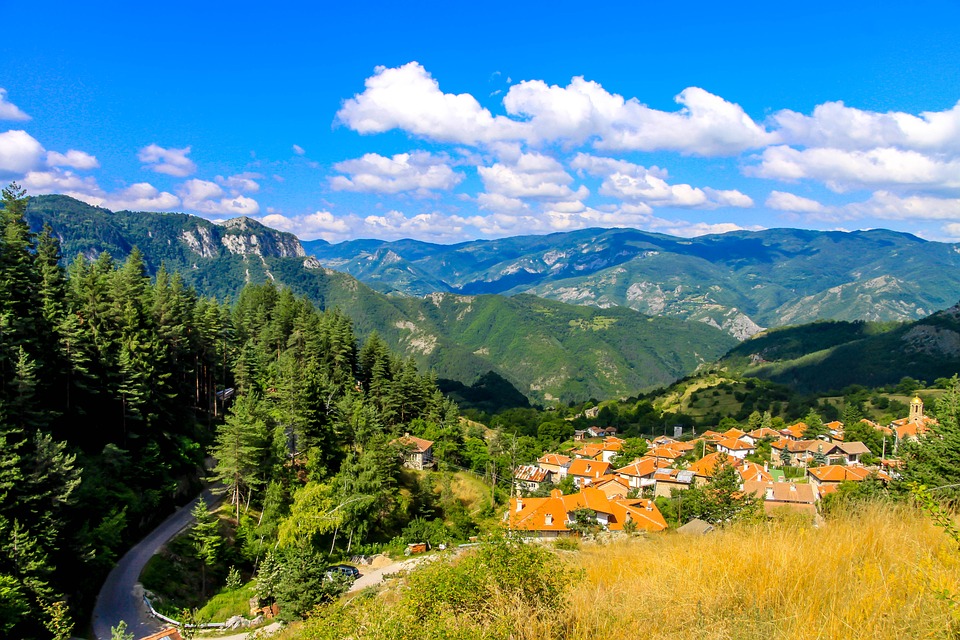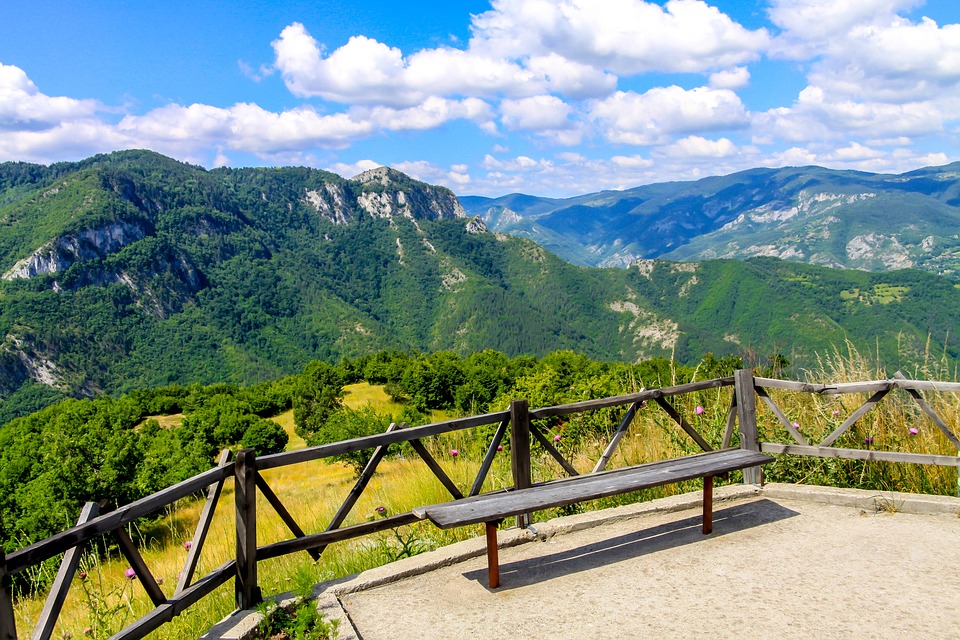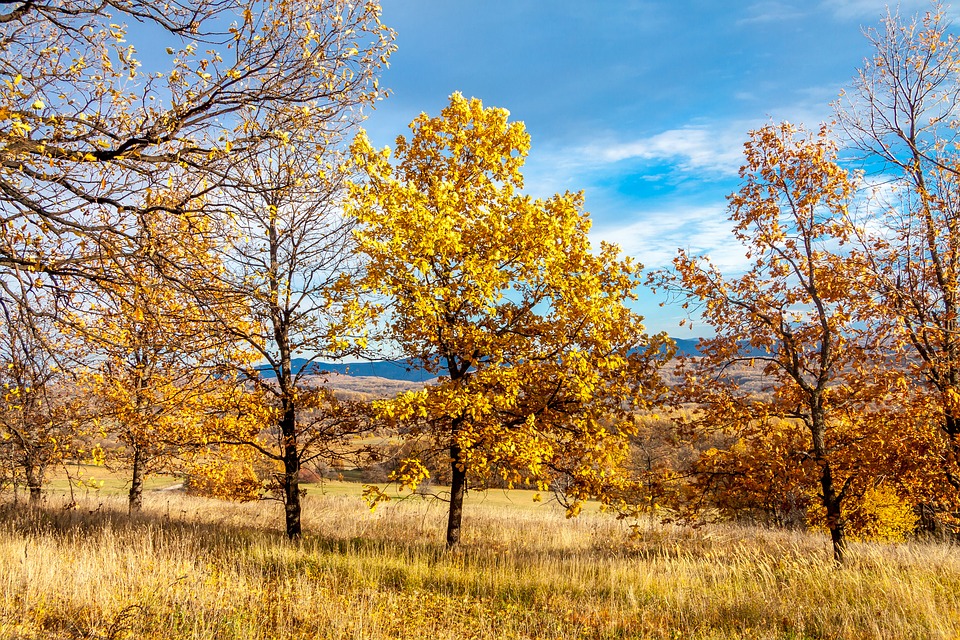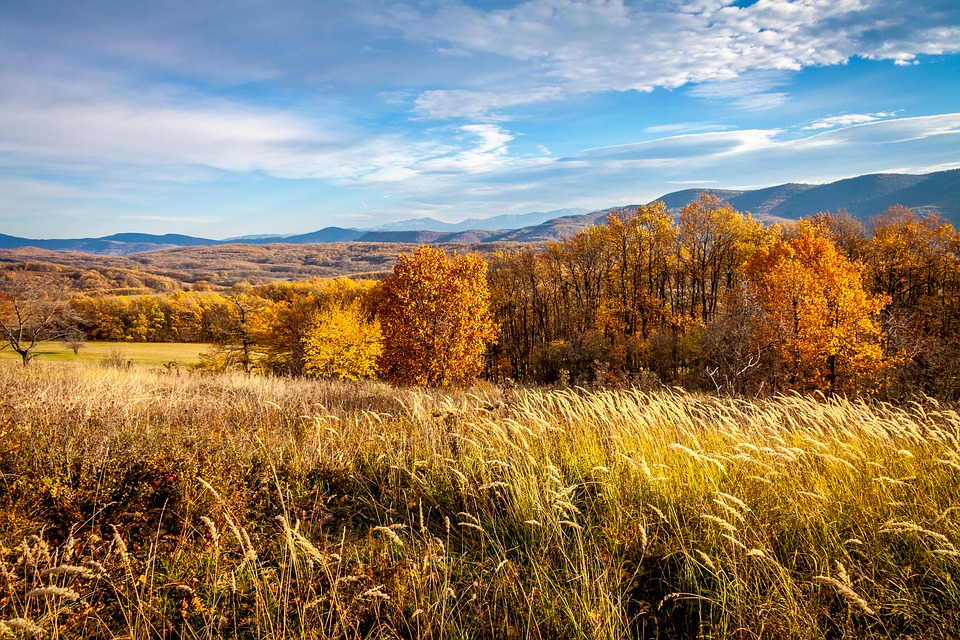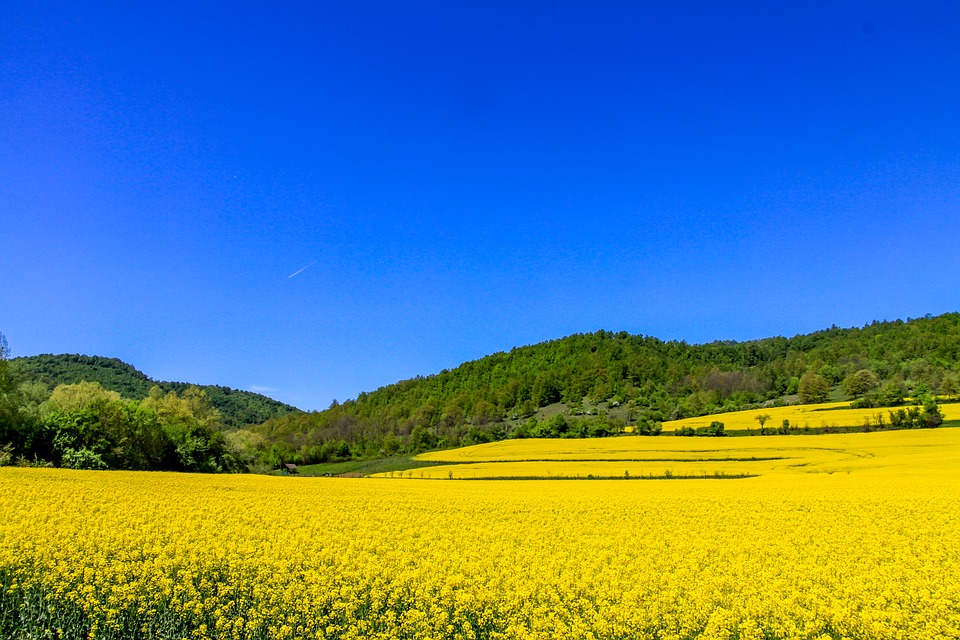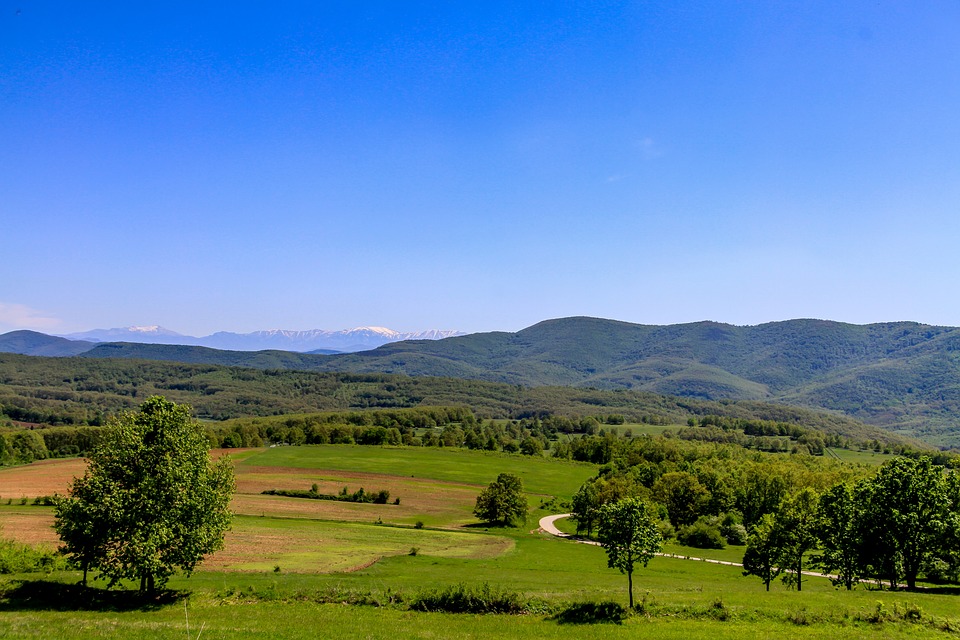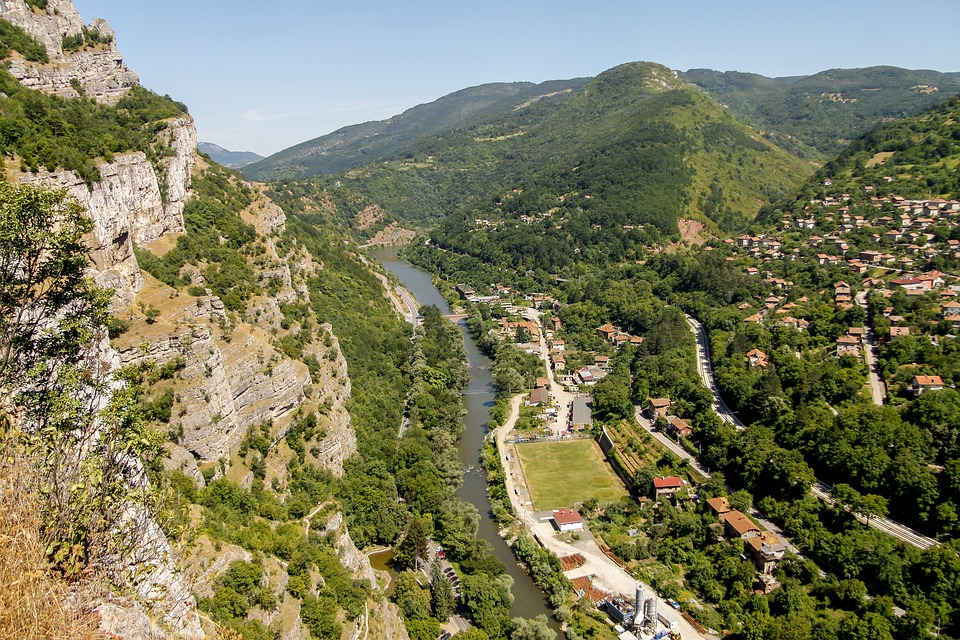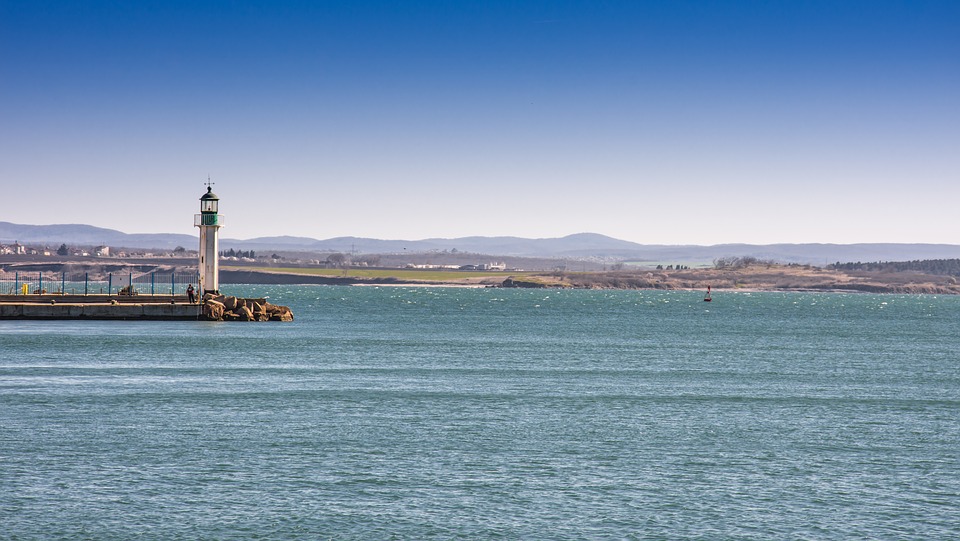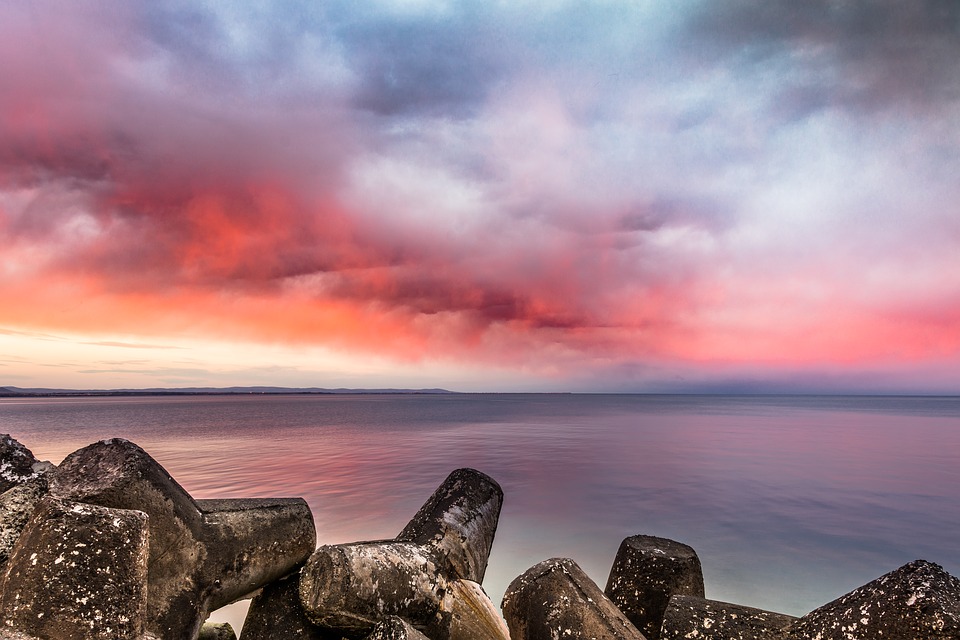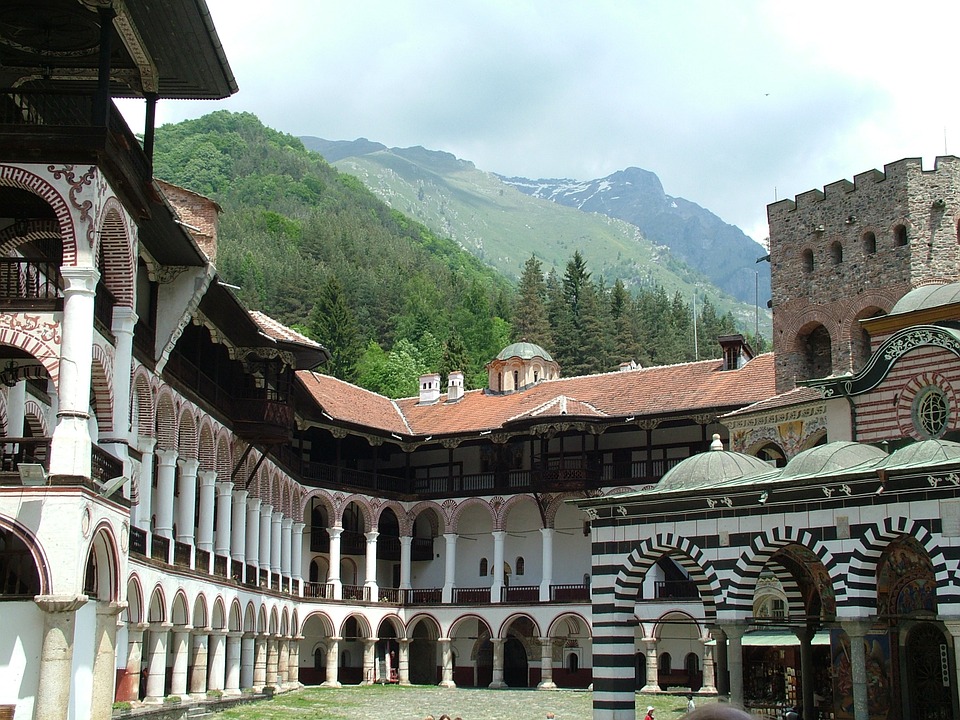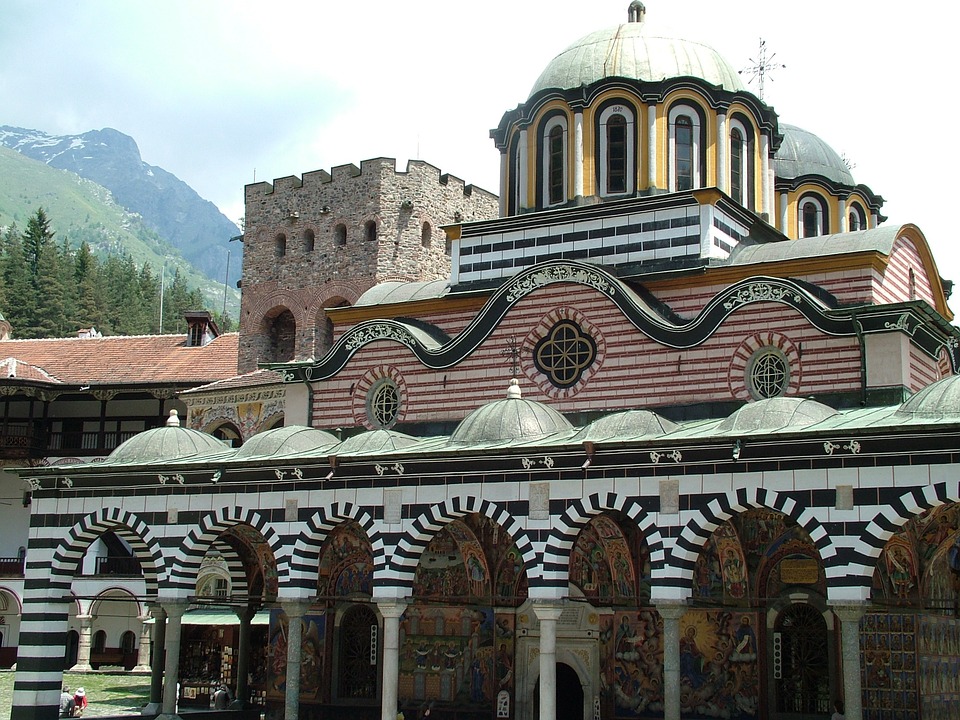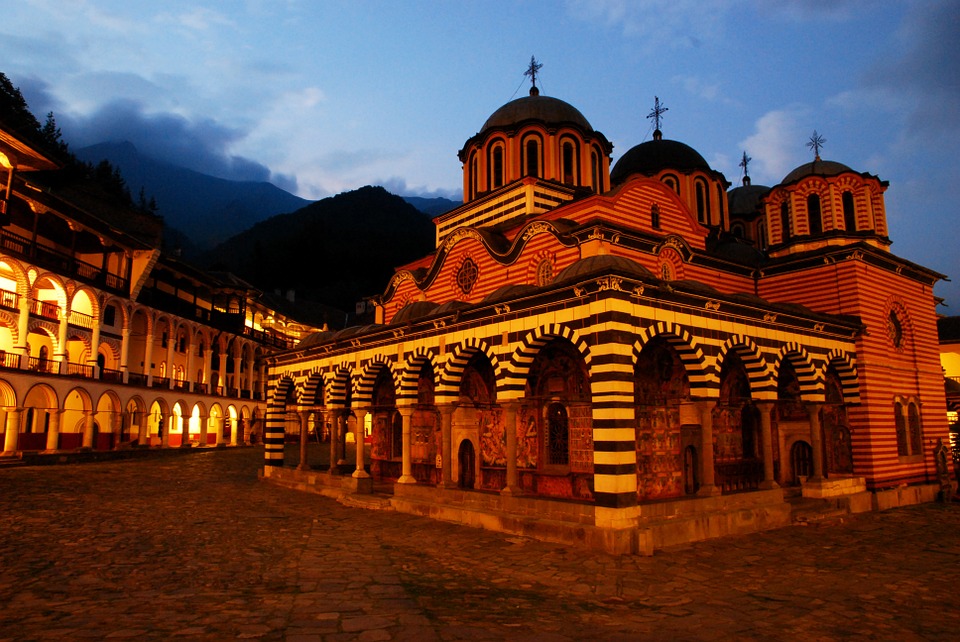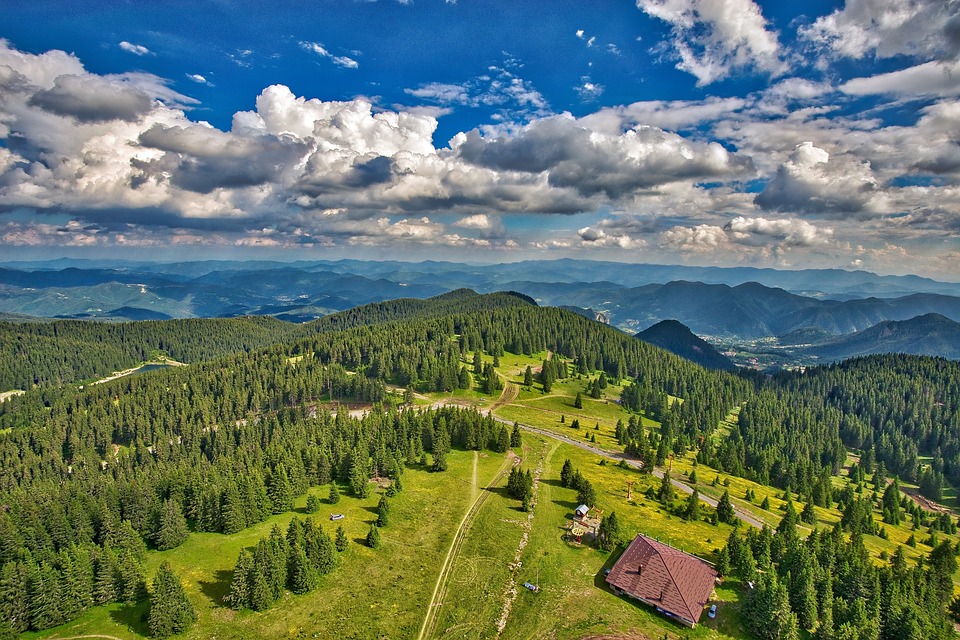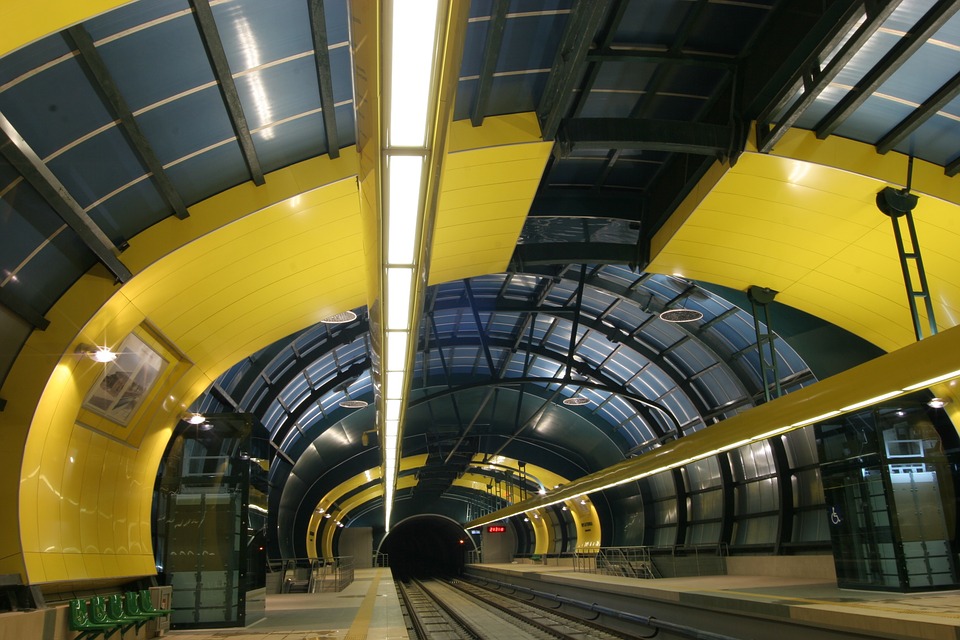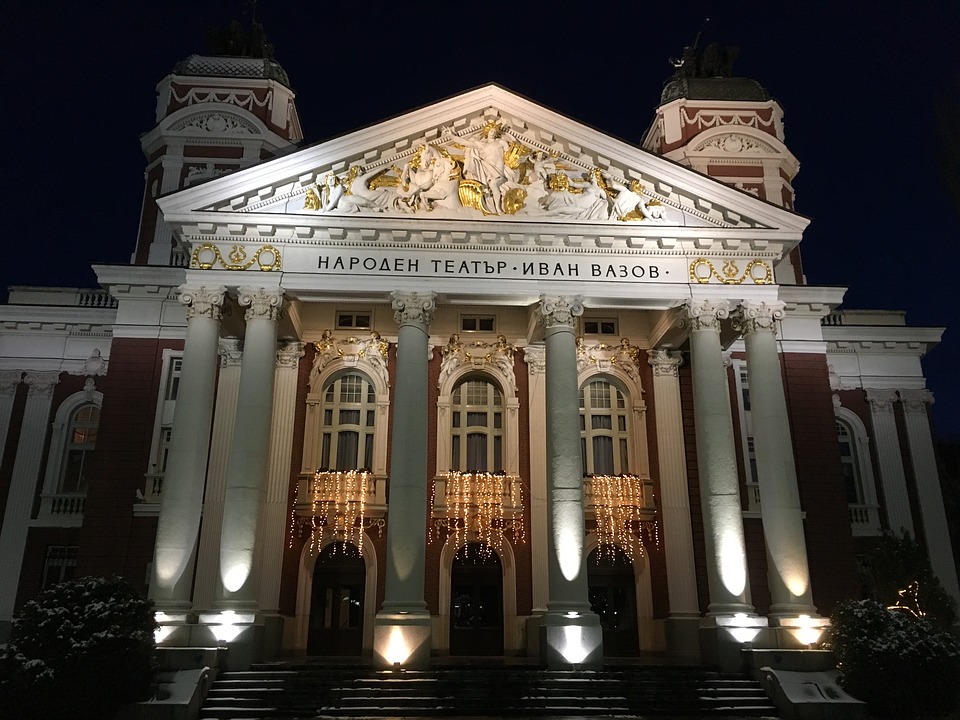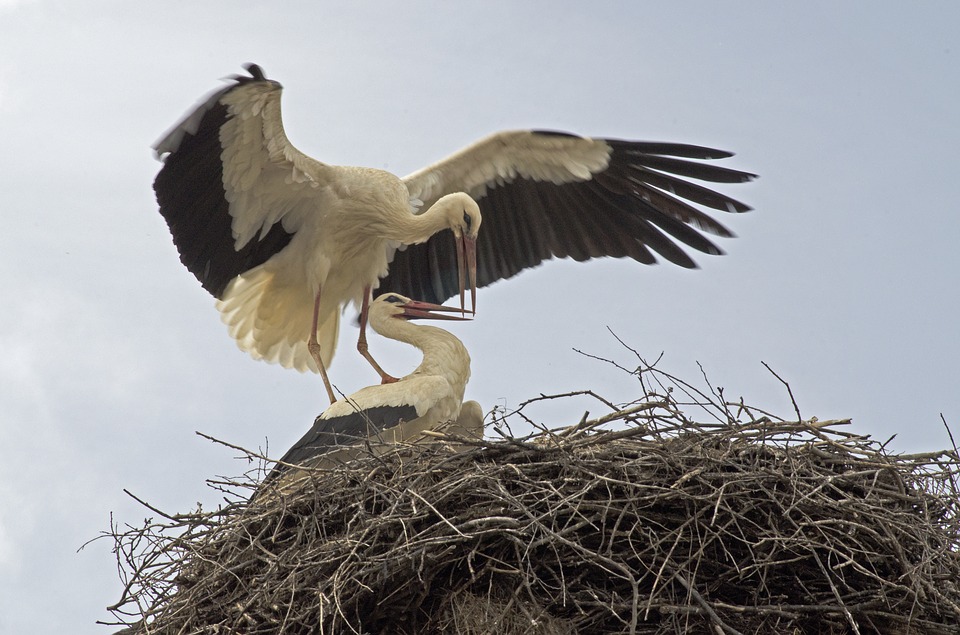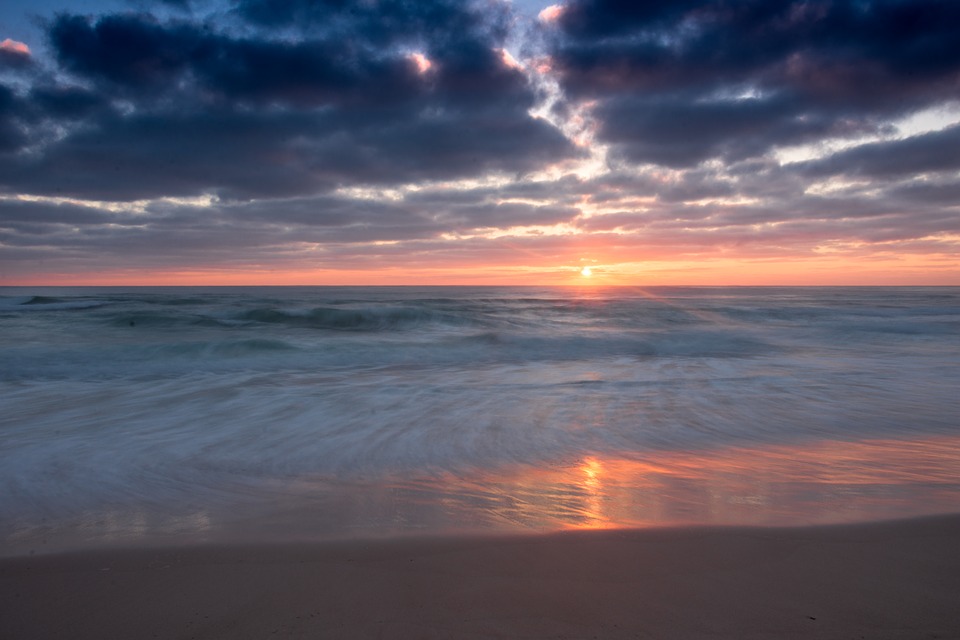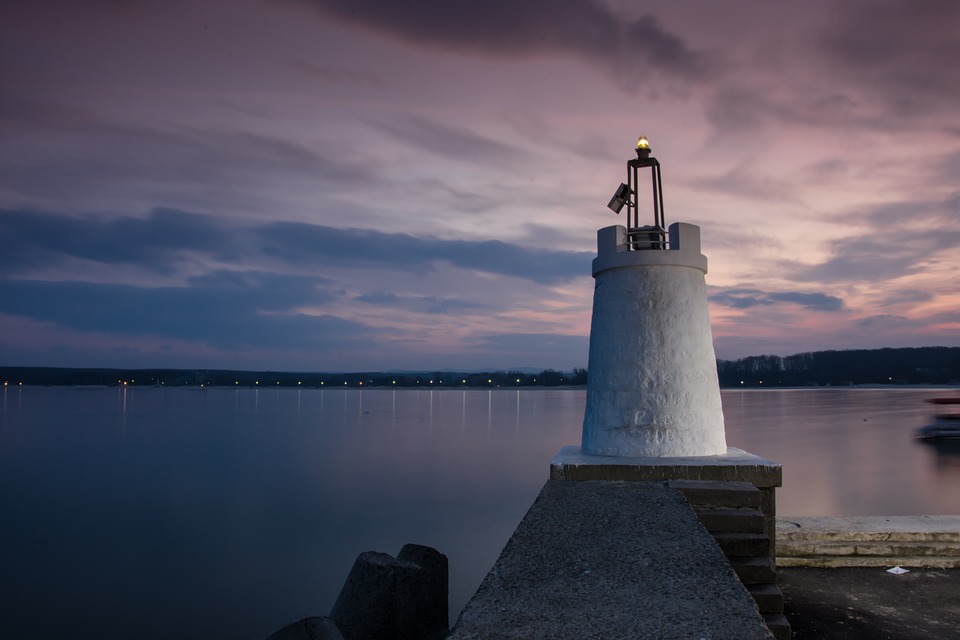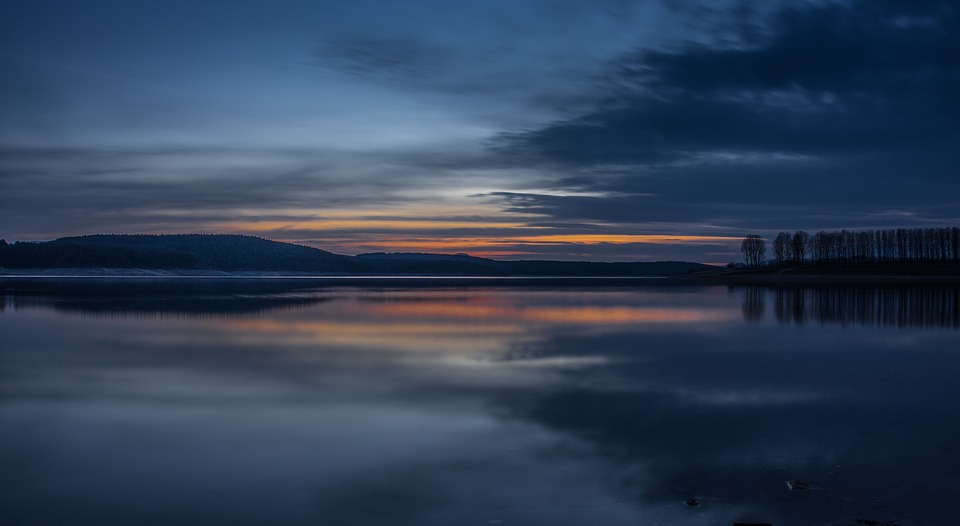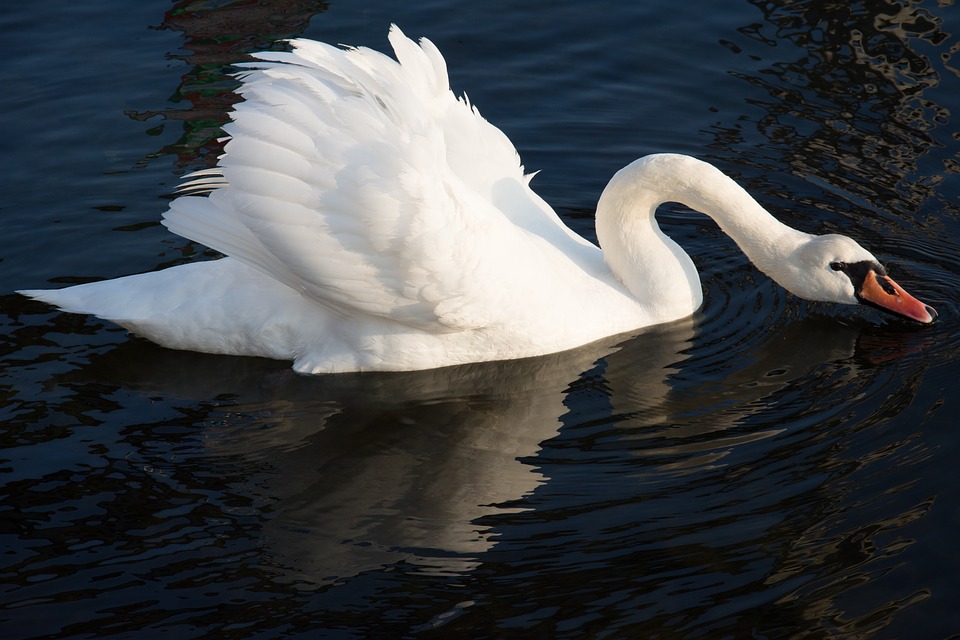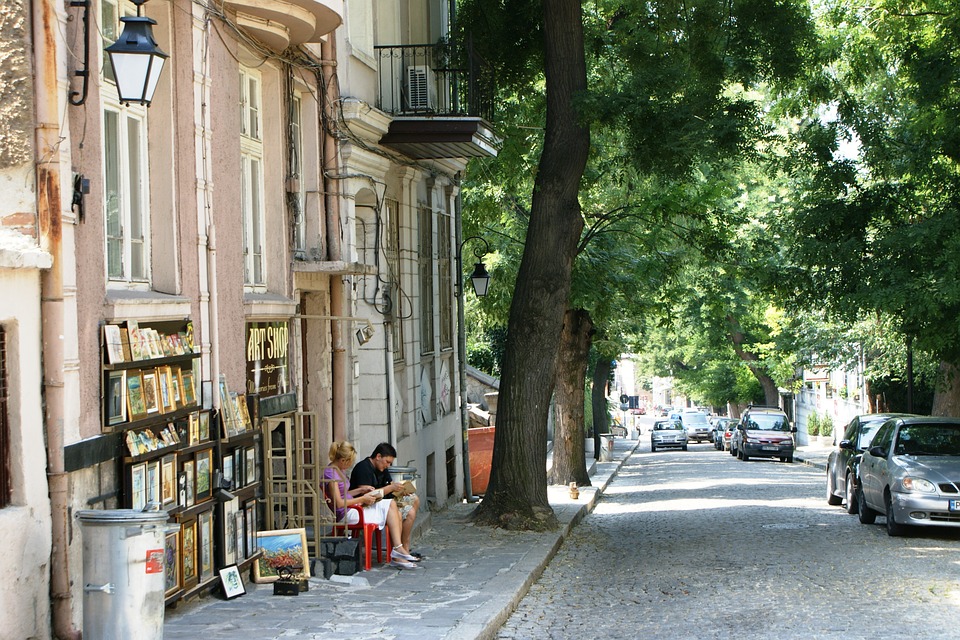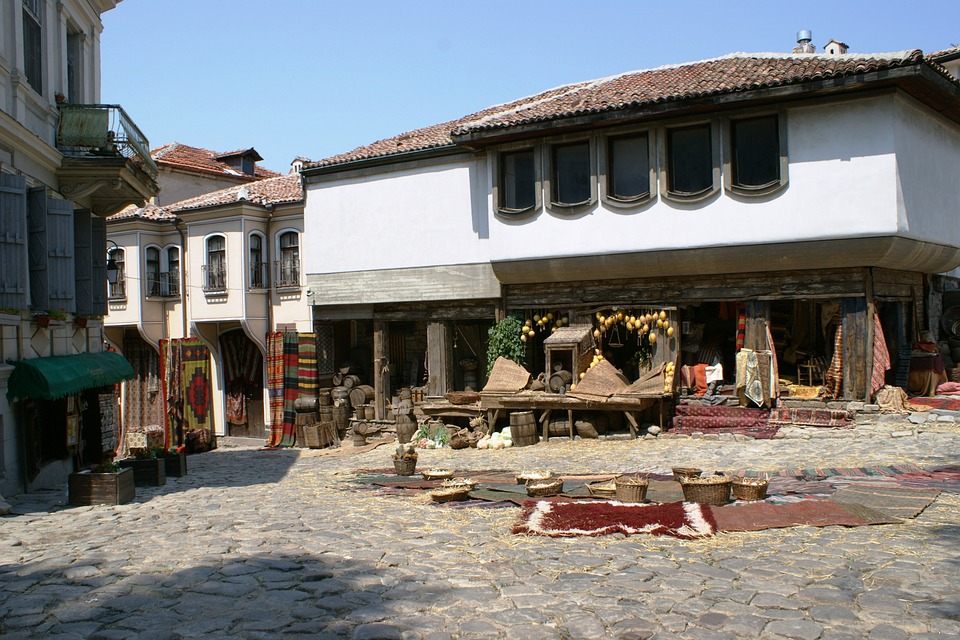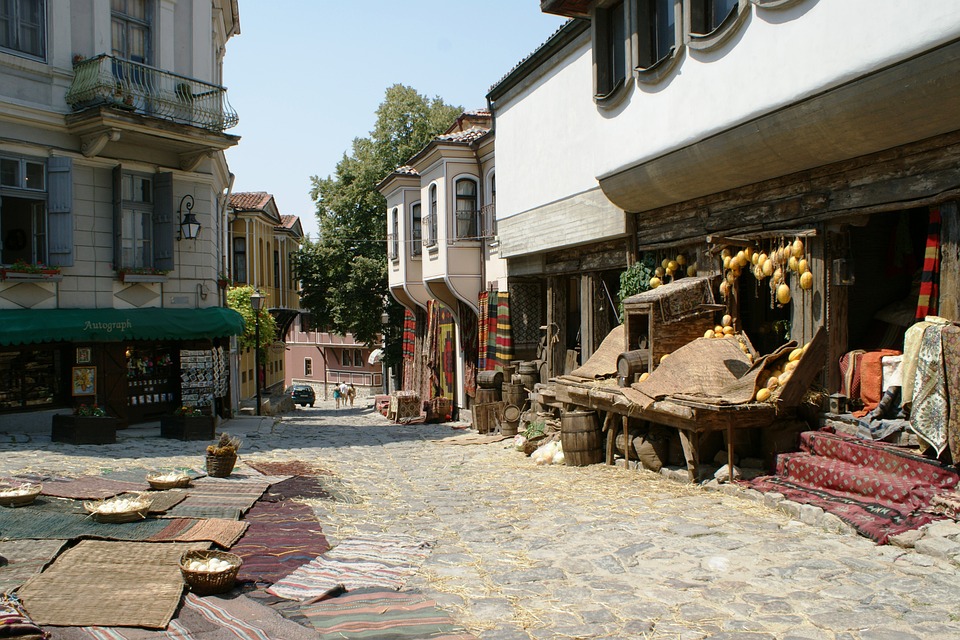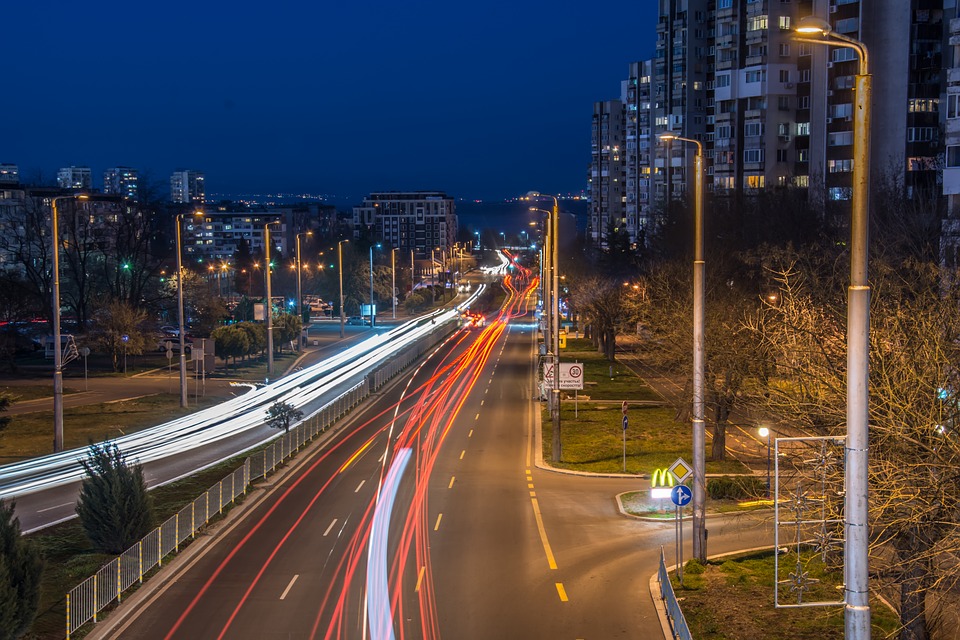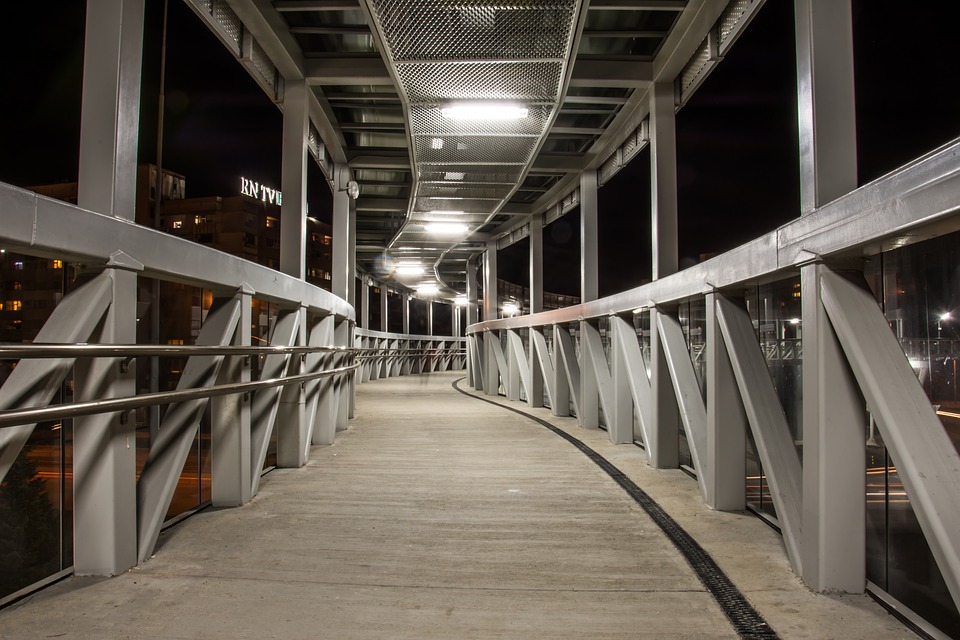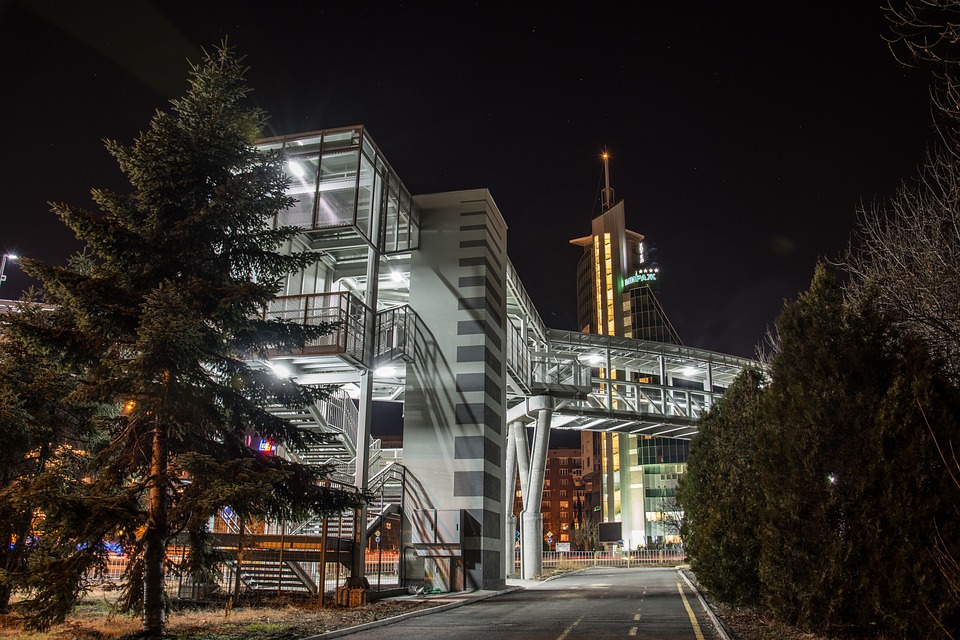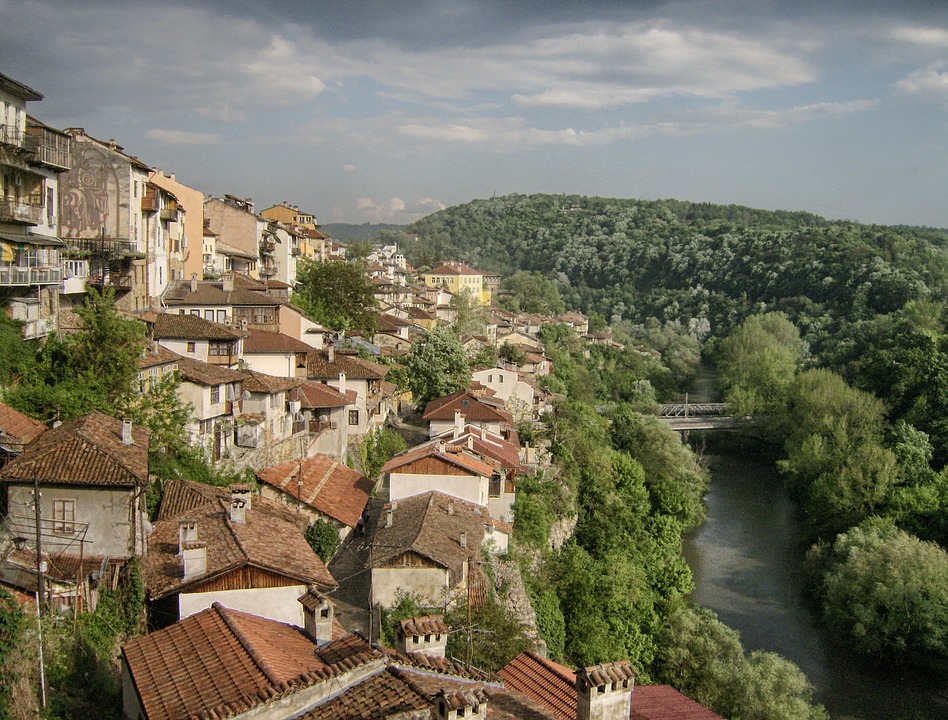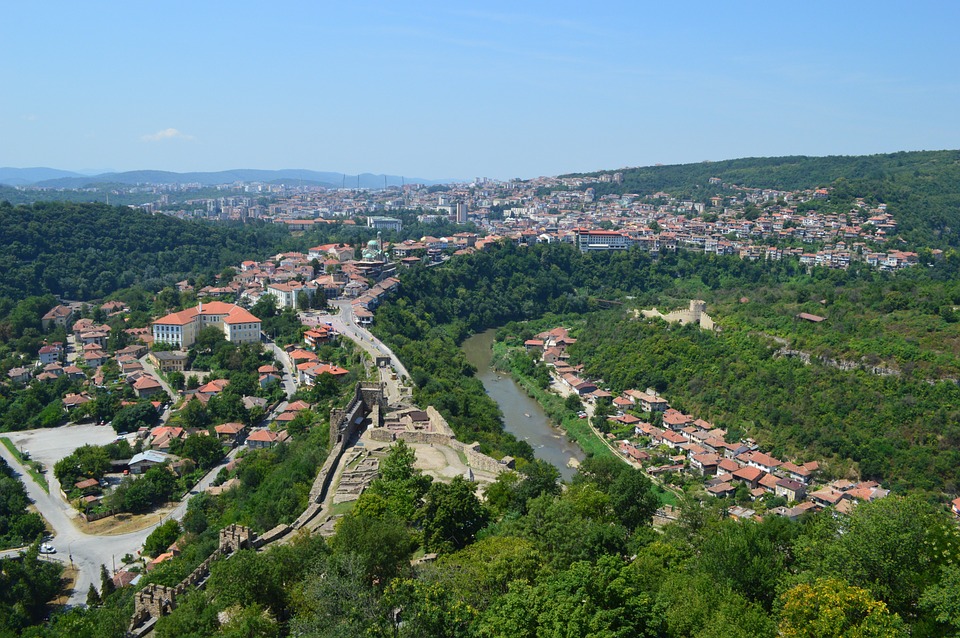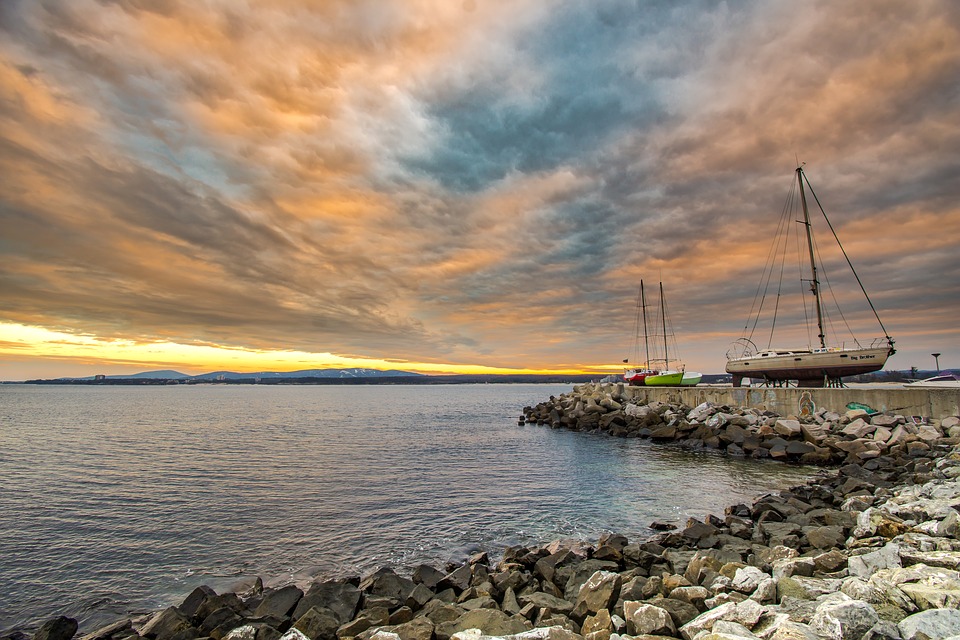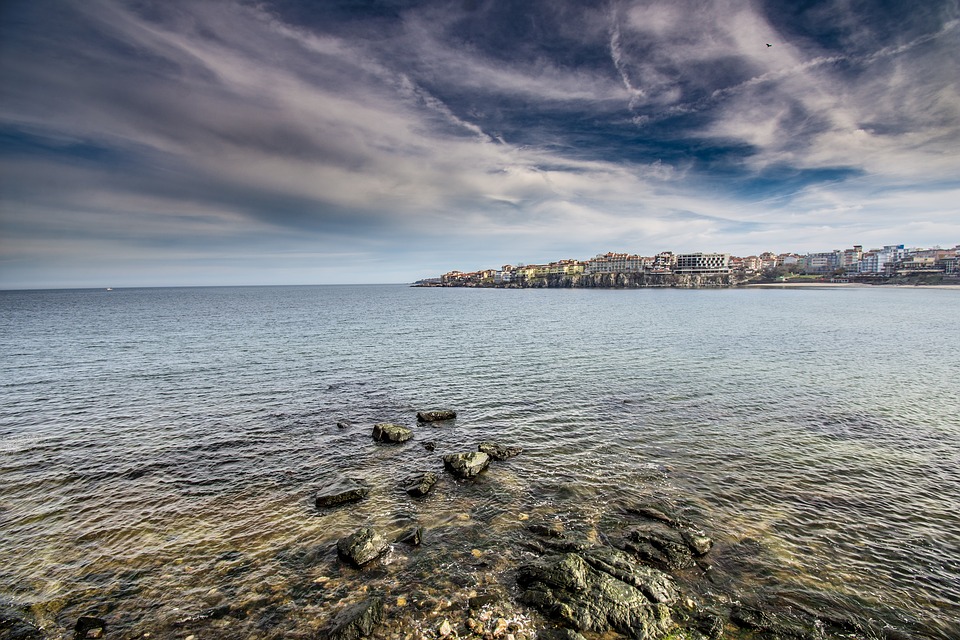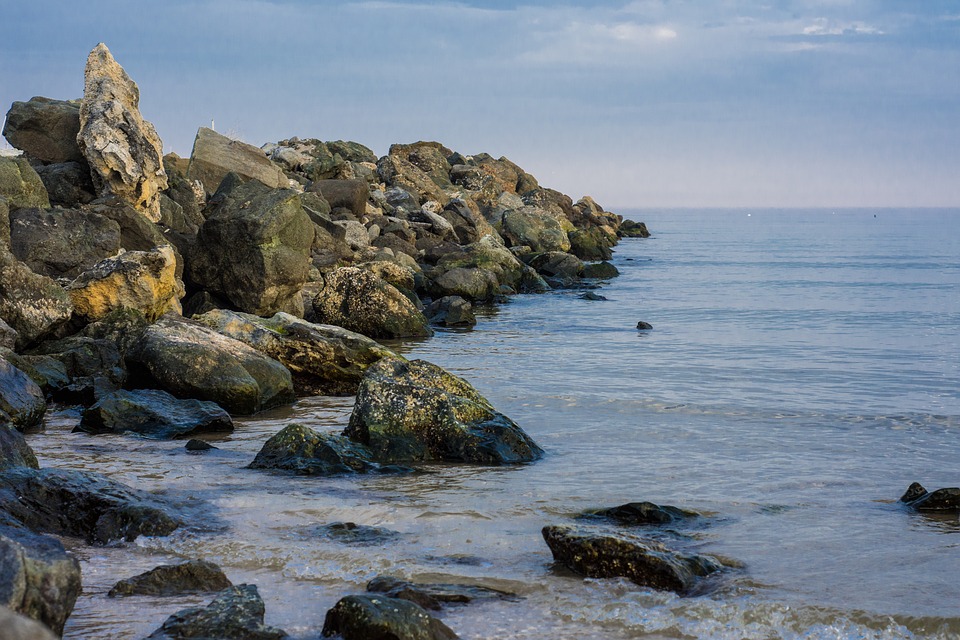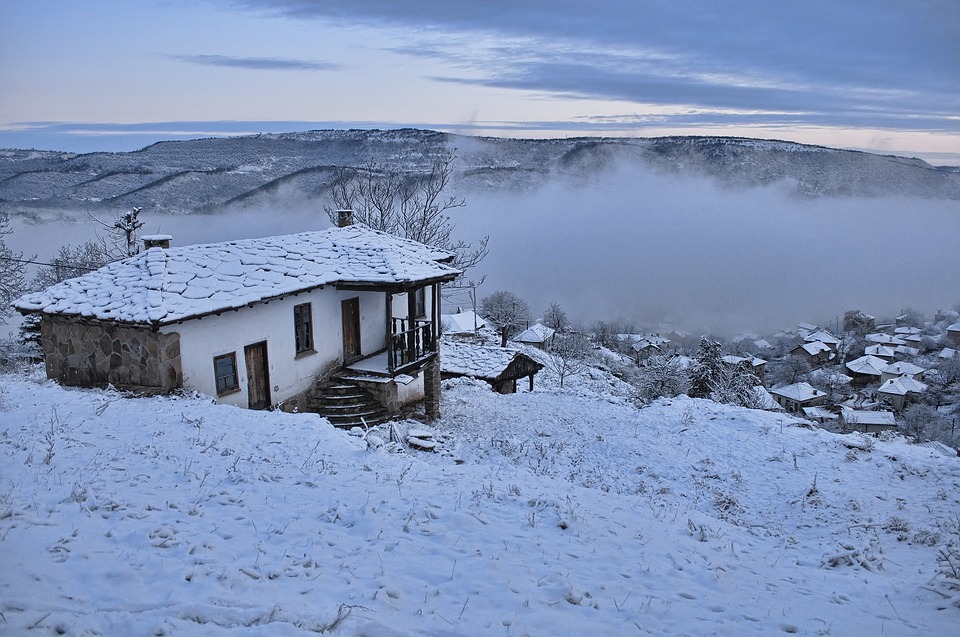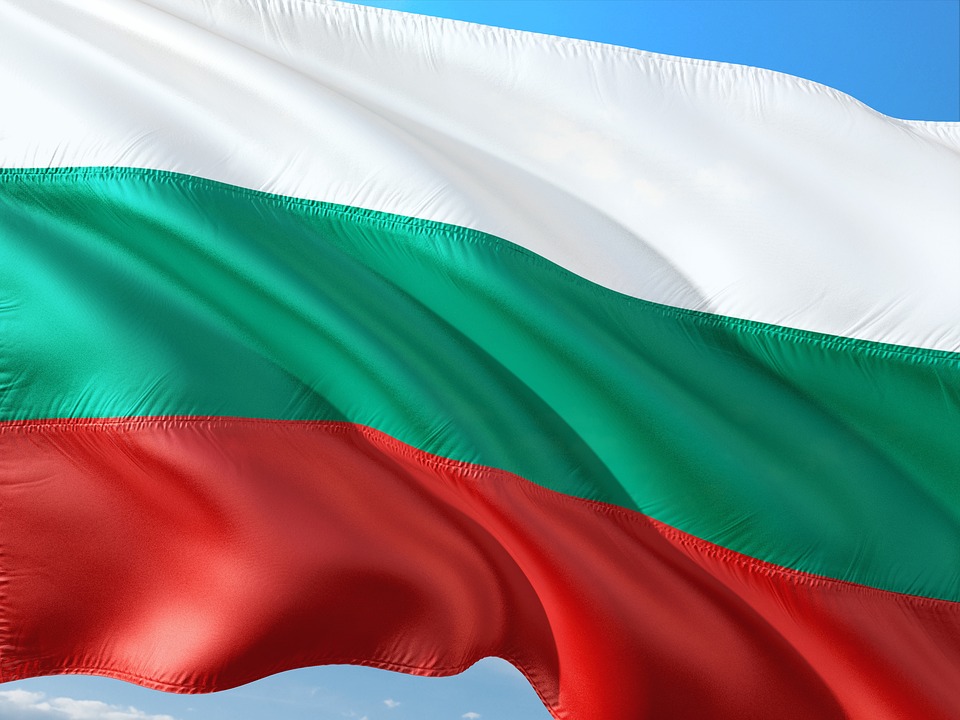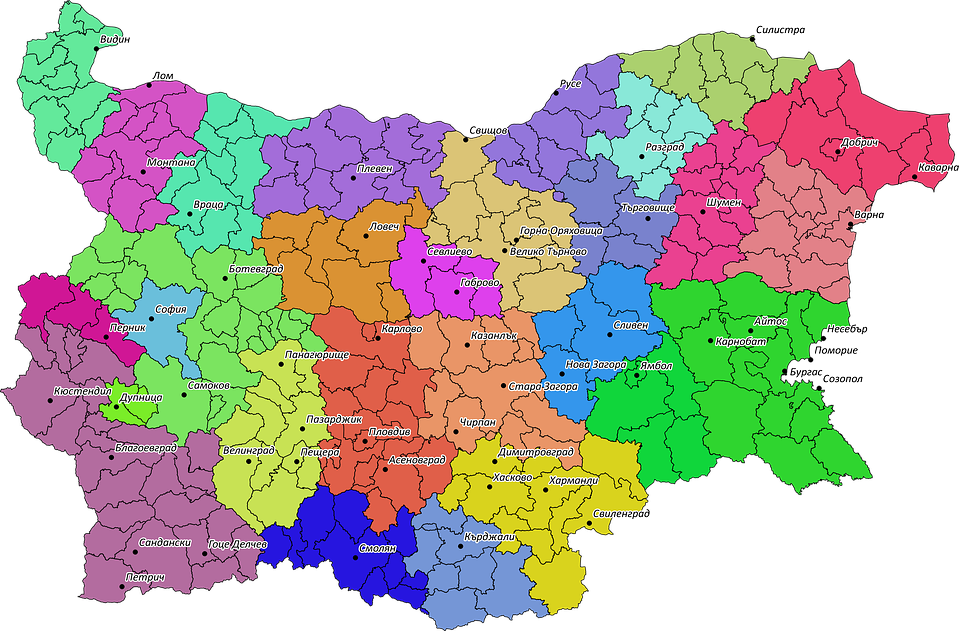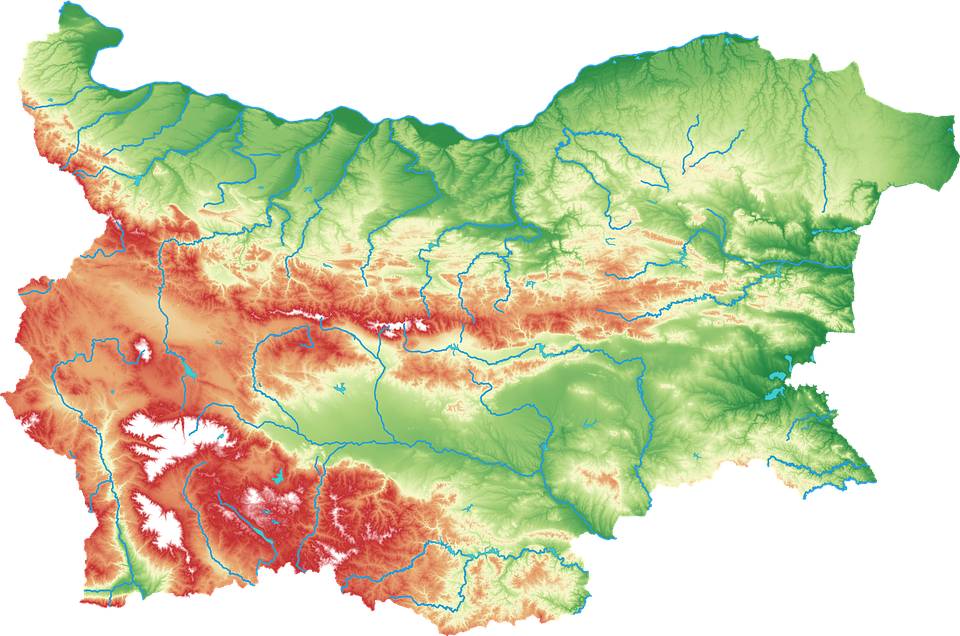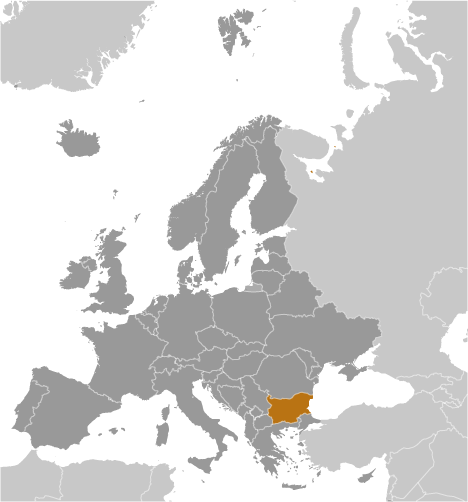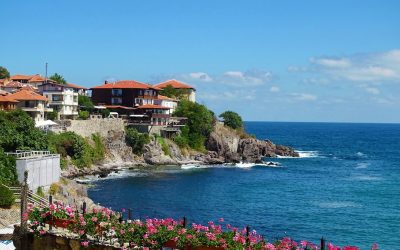Bulgaria
(Republika Bŭlgaria (Republic of Bulgaria))

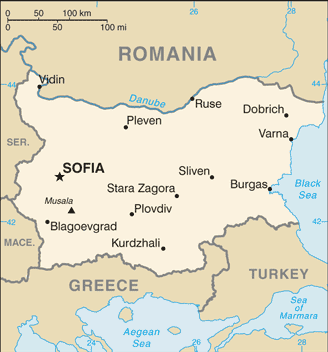
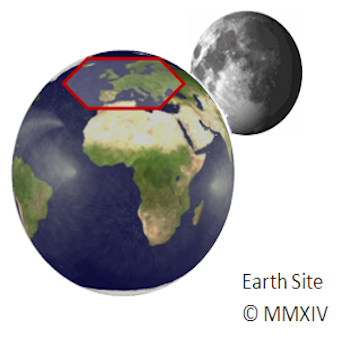
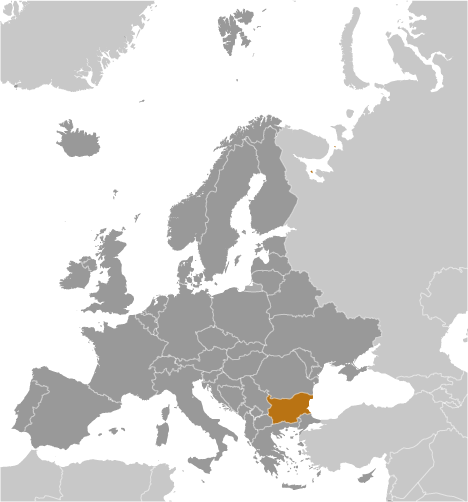
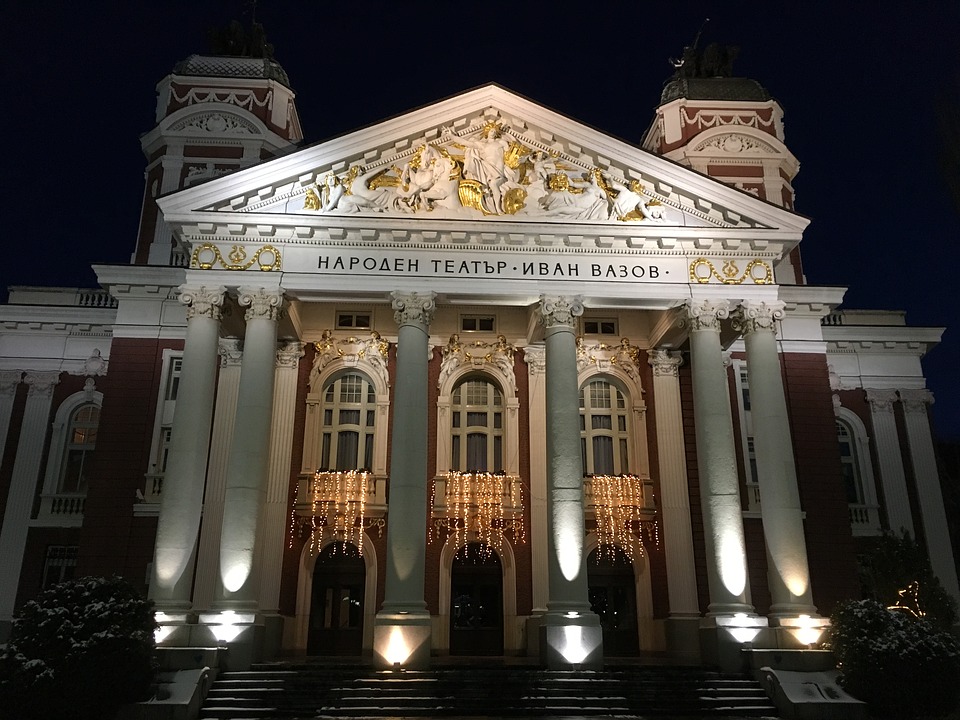
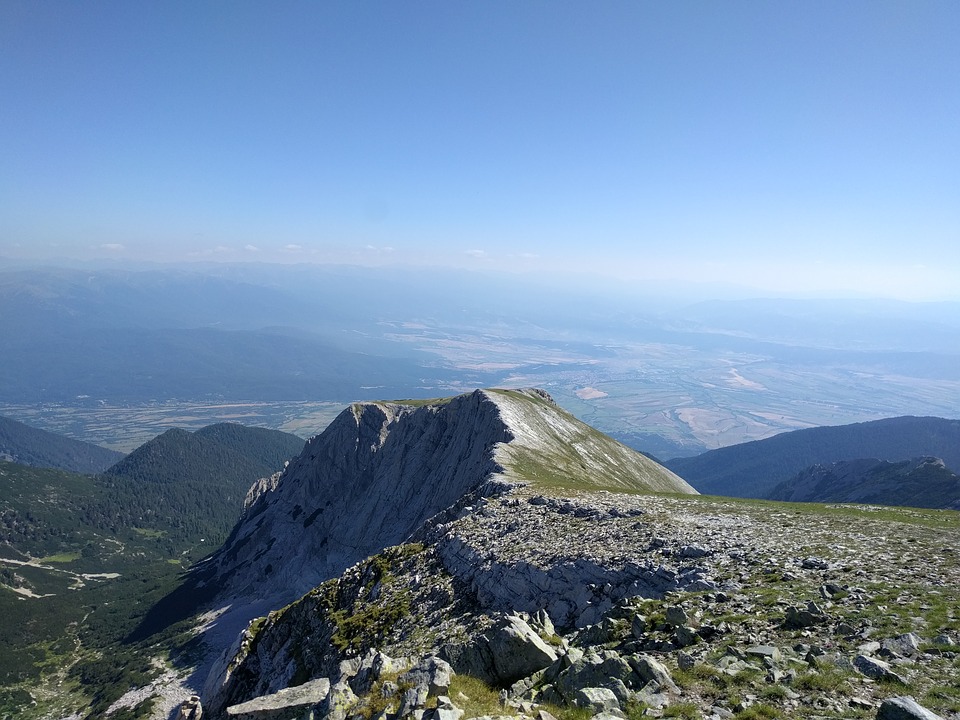
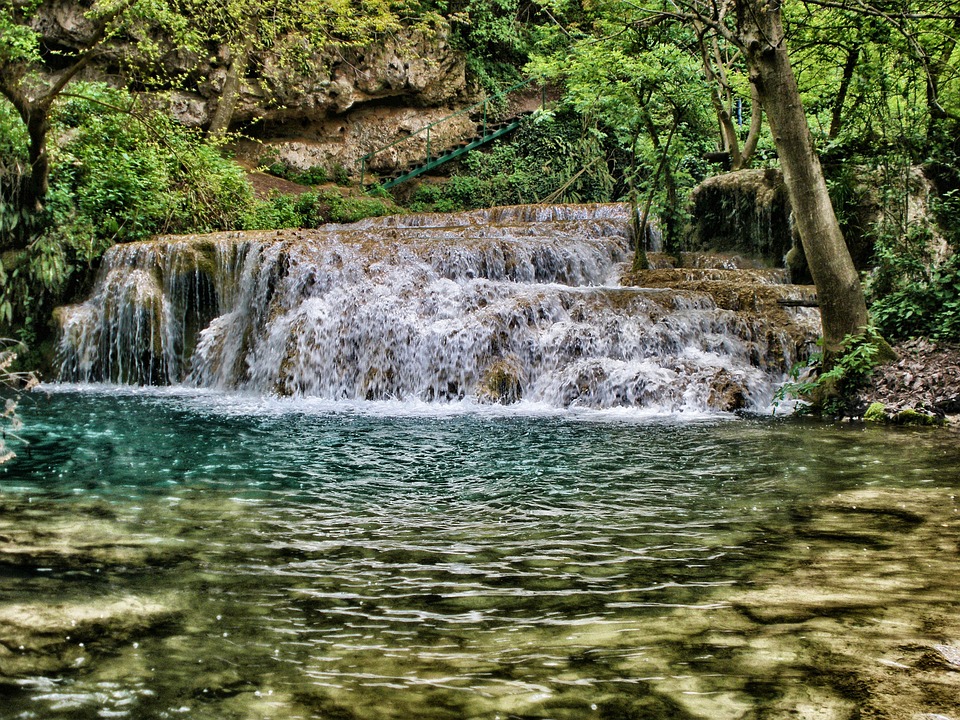
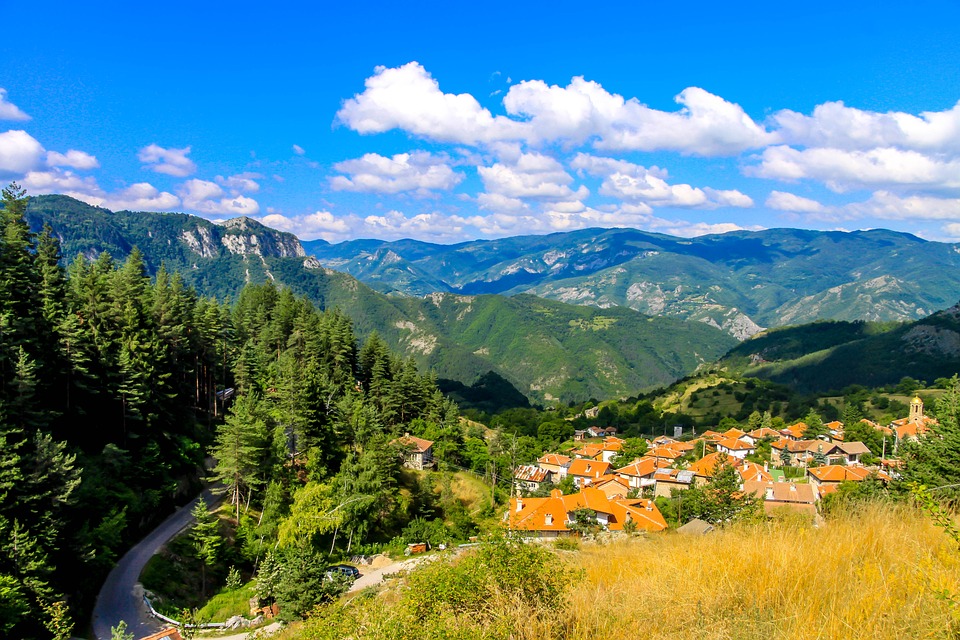
Capital of Bulgaria : Sofia
Population (Estimated July 2012): 7,037,935
Area: 111,002 km2 or 42,858 mi2
Currency: Lev (Lv; Plural Leva)
Official Language: Bulgarian
Political Information: Parliamentary Democracy
Official Religion: No Official Religion (approximately 82.6% of the population are Bulgarian Orthodox, 1.2% have other Christian beliefs, 12.2% are Muslim and 4% have other religious beliefs)
Highest Mountain: Musala at 2,925m or 9,596ft
GDP Official Exchange Rate (OER is more precise at gauging a countries economic power)
(Estimated 2011): $54.3 billion (US$) or £32,580 million (GBP)
GDP (OER) Per Capita (per member of the population estimated 2011): (US$) or (GBP)
GDP Purchasing Power Parity (PPP is good for gauging living conditions and use of resources but not as accurate as OER. This data has been calculated based on the sum value of all goods and services produced in the country valued at prices prevailing in the United States)
(Estimated 2011): $101.2 billion (US$) or £60,720 million(GBP)
GDP (PPP) Per Capita (per member of the population estimated 2011): $13,500 (US$) or £8,100(GBP)
Time Zone (GMT/UTC): +2:00
Counties/Provinces/States: 28 provinces (oblasti, singular – oblast); Blagoevgrad, Burgas, Dobrich, Gabrovo, Khaskovo, Kurdzhali, Kyustendil, Lovech, Montana, Pazardzhik, Pernik, Pleven, Plovdiv, Razgrad, Ruse, Shumen, Silistra, Sliven, Smolyan, Sofiya (Sofia), Sofiya-Grad (Sofia City), Stara Zagora, Turgovishte, Varna, Veliko Turnovo, Vidin, Vratsa, Yambol
Leaders: President Rumen RADEV (since 22 January 2017); Vice President Iliana IOTOVA (since 22 January 2017). Prime Minister Boyko BORISSOV (since 4 May 2017); note – BORISSOV served 2 previous terms as prime minister (27 July 2009-13 March 2013 and 7 November 2014-27 January 2017)
Additional: First Bulgarian Empire was in 681.
Sources: CIA World Fact Book, Encyclopaedia Britannica.
Bulgaria, located in Southeast Europe, is a country with a rich history and vibrant culture. It is bordered by Romania to the north, Serbia and North Macedonia to the west, Greece and Turkey to the south, and the Black Sea to the east. Throughout its history, Bulgaria has been influenced by various civilizations, including the Thracians, Romans, Byzantines, and Ottomans. This diverse heritage has shaped Bulgaria into a unique and fascinating destination for travellers.
The cultural heritage of Bulgaria is of great importance to both its people and the world. The country is home to nine UNESCO World Heritage Sites, including the ancient city of Nessebar, the Rila Monastery, and the Thracian Tomb of Kazanlak. These sites showcase Bulgaria’s rich history and architectural wonders. Additionally, Bulgaria is known for its traditional folk music and dance, which have been recognized by UNESCO as an intangible cultural heritage. The preservation and celebration of Bulgarian culture is a source of pride for its people and a draw for visitors from around the world.
Geography and Climate of Bulgaria: From the Black Sea to the Balkan Mountains
Bulgaria’s geography is diverse and offers a range of landscapes to explore. The country is known for its beautiful Black Sea coastline, with sandy beaches and picturesque seaside towns such as Varna and Burgas. Inland, Bulgaria is dominated by the Balkan Mountains, which run through the centre of the country. These mountains provide stunning scenery and opportunities for hiking, skiing, and other outdoor activities.
The climate in Bulgaria varies depending on the region. The coastal areas have a Mediterranean climate with hot summers and mild winters. Inland, the climate becomes more continental with hot summers and cold winters. The mountainous regions experience colder temperatures and heavy snowfall in winter, making them popular destinations for winter sports enthusiasts. Overall, Bulgaria offers a diverse climate that caters to a variety of interests and activities throughout the year.
Bulgarian Cuisine: A Blend of Eastern and Western Flavours
Bulgarian cuisine is a delicious blend of Eastern and Western flavours, influenced by its geographical location and historical connections. The cuisine is known for its use of fresh, locally sourced ingredients and traditional cooking methods. Some staple ingredients in Bulgarian cuisine include yoghurt, cheese, tomatoes, peppers, and herbs such as parsley and dill.
Traditional Bulgarian dishes are hearty and full of flavour. One popular dish is banitsa, a pastry filled with cheese or spinach. Another traditional dish is shopska salad, made with tomatoes, cucumbers, peppers, onions, and feta cheese. Bulgarian cuisine also includes a variety of grilled meats, such as kebapche (grilled minced meat) and kavarma (stewed meat with vegetables).
Neighbouring countries have also influenced Bulgarian cuisine. Turkish cuisine has had a significant impact, with dishes such as moussaka and baklava being popular in Bulgaria. Greek cuisine has also made its mark, with dishes like gyros and souvlaki being enjoyed by Bulgarians.
Bulgarian Festivals and Traditions: Celebrating the Nation’s Heritage
Bulgaria is known for its vibrant festivals and traditions that celebrate the nation’s heritage. These celebrations play an important role in Bulgarian culture, bringing communities together and preserving traditions that have been passed down through generations.
One of the most famous festivals in Bulgaria is Kukeri, which takes place in late winter or early spring. Participants dress in elaborate costumes and masks to chase away evil spirits and bring good luck for the upcoming year. The festival involves music, dancing, and parades through the streets.
Another popular festival is Baba Marta, which celebrates the arrival of spring on March 1st. On this day, Bulgarians exchange martenitsi, red and white bracelets or decorations made from yarn. The martenitsi are worn until the first signs of spring appear, at which point they are tied to a tree for good luck.
Other important traditions in Bulgaria include the celebration of Easter, which is marked by church services, feasts, and the cracking of red-dyed eggs. Christmas is also a significant holiday, with traditions such as carol singing and the lighting of a yule log.
Bulgarian Arts and Architecture: From Ancient Thracian Tombs to Modern Masterpieces
Bulgaria has a rich artistic and architectural heritage that spans thousands of years. The country is home to numerous ancient Thracian tombs, which are known for their intricate murals and valuable artefacts. One of the most famous is the Thracian Tomb of Kazanlak, which dates back to the 4th century BC and is a UNESCO World Heritage Site.
In addition to its ancient treasures, Bulgaria is also home to a thriving contemporary art scene. Many Bulgarian artists have gained international recognition for their work in various mediums, including painting, sculpture, and photography. The country’s capital city, Sofia, is known for its vibrant art galleries and museums that showcase both traditional and modern Bulgarian art.
Bulgarian architecture is also diverse and reflects the country’s history and influences. The Cyrillic alphabet was invented in Bulgaria in the 9th century, and many churches and monasteries feature beautiful frescoes and intricate woodcarvings. The Rila Monastery, located in the Rila Mountains, is a prime example of Bulgarian religious architecture and is a UNESCO World Heritage Site.
Bulgarian Sports and Recreation: From Skiing to Football
Sports play an important role in Bulgarian culture, with football being the most popular sport in the country. The national football team has had success on the international stage, reaching the semi-finals of the FIFA World Cup in 1994. Bulgarian football clubs also compete in European competitions, with teams such as CSKA Sofia and Levski Sofia having a strong following.
In addition to football, Bulgaria is known for its winter sports, particularly skiing. The country has several ski resorts, including Bansko, Borovets, and Pamporovo, which offer a range of slopes for all skill levels. These resorts attract both locals and tourists who enjoy skiing, snowboarding, and other winter activities.
Bulgaria also offers opportunities for outdoor recreation in its diverse landscapes. The country has numerous national parks and nature reserves that are perfect for hiking, camping, and wildlife spotting. The Rhodope Mountains, in particular, are a popular destination for outdoor enthusiasts due to their stunning scenery and unique flora and fauna.
Bulgarian Economy: A Growing Market in Southeast Europe
Bulgaria’s economy has experienced significant growth since the country transitioned to a market-based system in the early 1990s. Today, Bulgaria is considered one of the fastest-growing economies in the European Union. The country’s strategic location, low taxes, and skilled workforce have attracted foreign investment and contributed to its economic success.
The main industries in Bulgaria include manufacturing, agriculture, tourism, and services. The manufacturing sector is diverse and includes industries such as automotive, electronics, textiles, and food processing. Agriculture is also an important sector, with Bulgaria being one of the largest producers of wheat and sunflower seeds in Europe.
Tourism is a growing industry in Bulgaria, with the country attracting visitors from around the world. The Black Sea coast is a popular destination for beach holidays, while the ski resorts in the mountains attract winter sports enthusiasts. Cultural tourism is also on the rise, with visitors coming to explore Bulgaria’s historical sites and experience its rich cultural heritage.
Bulgarian Education and Healthcare: Investing in the Future
Bulgaria has made significant investments in its education and healthcare systems in recent years. The country recognizes the importance of these sectors in building a prosperous and healthy future for its citizens.
The education system in Bulgaria is undergoing reforms to improve the quality of education and provide more opportunities for students. Efforts have been made to modernise the curriculum, enhance teacher training, and increase access to higher education. Bulgaria has a number of reputable universities and research institutions that attract students from around the world.
In terms of healthcare, Bulgaria has been investing in improving infrastructure, expanding access to healthcare services, and upgrading medical equipment. The country has a universal healthcare system that provides free or low-cost medical care to its citizens. Efforts are also being made to attract medical tourists by offering high-quality healthcare services at competitive prices.
Bulgarian Language and Customs: Navigating the Local Culture
The official language of Bulgaria is Bulgarian, which is spoken by the majority of the population. Bulgarian is a Slavic language that uses the Cyrillic alphabet, which was invented in Bulgaria in the 9th century. While English is widely spoken in tourist areas and major cities, learning a few basic phrases in Bulgarian can go a long way in navigating the local culture and showing respect to the locals.
Bulgarian customs and etiquette are influenced by both Eastern European and Balkan traditions. Bulgarians are known for their hospitality and welcoming nature. It is customary to greet people with a handshake, and it is polite to remove your shoes when entering someone’s home. When dining with Bulgarians, it is common to toast before each drink and to try a bit of everything on the table.
Travel and Tourism in Bulgaria: Discovering the Hidden Gems of the Balkans
Bulgaria offers a wealth of tourist destinations that cater to a variety of interests. The Black Sea coast is a popular destination for beach lovers, with its sandy beaches, clear waters, and vibrant seaside towns. The coastal cities of Varna and Burgas offer a mix of historical sites, cultural attractions, and lively nightlife.
Inland, the Balkan Mountains provide opportunities for outdoor activities such as hiking, mountain biking, and horseback riding. The Rila Mountains are home to the Rila Monastery, a UNESCO World Heritage Site that is a must-visit for its stunning architecture and religious significance.
For those interested in history and culture, Bulgaria has numerous ancient sites and museums to explore. The ancient city of Nessebar, with its well-preserved Roman ruins and medieval churches, is a UNESCO World Heritage Site. The capital city of Sofia is also worth a visit, with its mix of ancient Roman ruins, Ottoman mosques, and modern architecture.
In addition to the well-known tourist destinations, Bulgaria also offers hidden gems that are off the beaten path. The town of Veliko Tarnovo, known as the “City of the Tsars,” is famous for its medieval fortress and picturesque old town. The Belogradchik Rocks, located in northwestern Bulgaria, are a unique natural phenomenon that attracts visitors with their bizarre rock formations.
Bulgaria is a country rich in history, culture, and natural beauty. From its diverse landscapes to its vibrant festivals and traditions, Bulgaria offers something for every traveller. Whether you’re interested in exploring ancient ruins, hitting the slopes in winter, or simply enjoying the hospitality of the locals, Bulgaria has it all. So why not plan a trip to this hidden gem of the Balkans and experience all that Bulgaria has to offer? You won’t be disappointed.
Population Density of Bulgaria
Bulgaria, located in Southeast Europe, has a population density of approximately 65 people per square kilometer. With a total land area of 110,994 square kilometers and a population of around 7 million people, Bulgaria is considered to have a relatively low population density compared to other European countries. However, understanding population density is crucial for policymakers and citizens alike as it provides insights into the distribution of people across the country and can help inform decisions related to infrastructure development, resource allocation, and urban planning. Summary Bulgaria has a population density of 64 people per square kilometer. Population density is calculated by dividing the total population by the total land area. Bulgaria’s population density is lower than the European Union average. The population density in Bulgaria is unevenly distributed, with higher densities in urban areas. Factors affecting population density in Bulgaria include economic opportunities and natural resources. How is Population Density Calculated in Bulgaria? Population density is calculated by dividing the total population of a country or region by its land area. In the case of Bulgaria, the formula would be: Population Density = Total Population / Land Area. The total population can be obtained from national census data or estimates provided by statistical agencies, while the land area can be determined using geographic information systems (GIS) or other mapping tools. Data sources for population density in Bulgaria include the National Statistical Institute (NSI), which conducts regular censuses and surveys to collect demographic information. The NSI provides data on population size and distribution at various administrative levels, including municipalities and regions. Other sources of data include Eurostat, the statistical...
History of Bulgaria
Bulgaria, located in Southeast Europe, has a rich and diverse history that spans thousands of years. From its early settlements by Thracian and Slavic tribes to its time under Ottoman rule and eventual independence, Bulgaria has faced numerous challenges and triumphs throughout its history. This blog post aims to provide a comprehensive overview of Bulgaria’s history, highlighting its significant moments and contributions to the world. Summary Bulgaria’s early settlements date back to the Neolithic period, with evidence of Thracian tribes and Greek colonies. The First Bulgarian Empire rose to power in the 7th century under Khan Asparuh, establishing a strong military and political presence in the Balkans. Tsar Simeon I led Bulgaria’s Golden Age in the 10th century, expanding its territory and promoting education and culture. Bulgaria struggled for independence under Ottoman rule, with several uprisings and a successful war of liberation in 1877-78. Bulgaria’s modern state formed after World War II, with a transition to democracy in the 1990s and integration into the European Union in 2007. Bulgaria played a role in both World War I and II, with significant losses and political changes. The Communist era brought social and economic changes to Bulgaria, with a transition to democracy in 1989. Bulgaria’s integration into the European Union has brought economic benefits and opportunities for growth. Bulgaria’s cultural heritage includes Thracian artifacts, medieval architecture, and contributions to literature and music. Challenges and opportunities in Bulgaria’s future include economic development, political stability, and preserving its cultural heritage. The Early Settlements of Bulgaria Bulgaria’s history dates back to ancient times when it was inhabited by Thracian tribes. These tribes were known...
Terrain and Topography of Bulgaria: mountains, valleys, and plains.
Introduction Bulgaria, located in Southeastern Europe, is a country known for its diverse and stunning landscape. From towering mountains to fertile plains and a beautiful coastline along the Black Sea, Bulgaria offers a wide range of natural wonders to explore. Understanding the country’s terrain and topography is essential for appreciating its beauty and experiencing all that it has to offer. The Rila Mountains The Rila Mountains, located in southwestern Bulgaria, are the highest mountain range in the country. The highest peak in Bulgaria, Musala, stands at an impressive 2,925 meters (9,596 feet) above sea level. The Rila Mountains are known for their alpine beauty, with snow-capped peaks, glacial lakes, and lush green meadows. The range is a popular destination for hiking enthusiasts, with numerous trails that cater to different skill levels. In the winter months, the Rila Mountains transform into a winter wonderland, with ski resorts offering a variety of slopes for skiing and snowboarding. The Balkan Mountains Running through the heart of Bulgaria is the Balkan Mountains, also known as the Stara Planina. This mountain range holds great historical significance and cultural importance for the country. It served as a natural barrier between different regions of Bulgaria throughout history and played a crucial role in shaping the country’s identity. The Balkan Mountains are home to diverse flora and fauna, with several protected areas and nature reserves. The range is also known for its natural wonders, including impressive waterfalls and caves that attract visitors from all over the world. The Rhodope Mountains The Rhodope Mountains, located in southern Bulgaria, are a mystical range steeped in legends and natural beauty....
Climate Zones of Bulgaria: Different climate regions Of Bulgaria
Bulgaria, located in Southeast Europe, is a country known for its diverse geography and climate. It is bordered by Romania to the north, Serbia and North Macedonia to the west, Greece and Turkey to the south, and the Black Sea to the east. This unique location gives Bulgaria a variety of climate zones, ranging from continental to Mediterranean, alpine, transitional, and coastal. Understanding these climate zones is crucial for various industries and individuals, as it affects agriculture, tourism, and daily life in different regions of the country. Summary Bulgaria has five main climate zones: Continental, Mediterranean, Alpine, Transitional, and Coastal. The Continental region has cold winters and hot summers, with low precipitation. The Mediterranean region has mild winters and hot summers, with moderate precipitation. The Alpine region has cold winters and cool summers, with high precipitation. The Transitional region has a mix of Continental and Mediterranean climates, with moderate precipitation. The Continental Climate Region of Bulgaria The continental climate region of Bulgaria is characterized by cold winters and hot summers. The average temperature in winter ranges from -1°C to -6°C (30°F to 21°F), while in summer it can reach up to 25°C to 30°C (77°F to 86°F). This region experiences distinct seasons, with spring and autumn being relatively short. Cities such as Sofia, Plovdiv, and Veliko Tarnovo are located in the continental climate region of Bulgaria. These cities experience cold winters with occasional snowfall and hot summers with temperatures often exceeding 30°C (86°F). The continental climate region is also known for its temperature extremes, with temperatures dropping below freezing in winter and reaching over 40°C (104°F) in summer. One...
Political Boundaries of Bulgaria: Provinces, Districts, or Historical Boundaries.
Bulgaria, located in Southeast Europe, is a country with rich history and diverse culture. Like any other country, Bulgaria has political boundaries that define its territories and administrative divisions. These boundaries play a significant role in shaping the country’s governance, culture, and society. In this article, we will explore the different types of political boundaries in Bulgaria, including provinces, districts, and historical boundaries. We will also discuss the impact of these boundaries on Bulgaria’s culture, economy, foreign relations, and its relationship with the European Union. Summary Bulgaria is divided into 28 provinces, each with its own governor and administrative center. The province system in Bulgaria is responsible for implementing national policies and managing local affairs. Bulgaria’s 265 districts are responsible for providing public services and maintaining infrastructure within their boundaries. Bulgaria’s historical boundaries have shifted over time due to wars, treaties, and political changes. Bulgaria’s political boundaries have a significant impact on its culture, economy, and foreign relations. Overview of Bulgaria’s Political Boundaries: Provinces, Districts, and Historical Boundaries Bulgaria is divided into 28 provinces, which are further divided into 265 municipalities. The provinces serve as administrative divisions and are responsible for implementing national policies and programs at the regional level. Each province has its own governor who is appointed by the central government. The provinces play a crucial role in ensuring effective governance and service delivery to the citizens. In addition to provinces, Bulgaria is also divided into districts. There are 28 districts in total, each corresponding to a province. The districts are responsible for overseeing the implementation of national policies and programs at the local level. They work...
Cultural or Historical Sites of Bulgaria: Important Cultural Landmarks or Historical Sites In Bulgaria
Bulgaria is a country with a rich cultural and historical heritage that spans thousands of years. From ancient Roman ruins to medieval fortresses, Bulgaria is home to numerous cultural sites that offer a glimpse into its fascinating past. Exploring these sites not only allows visitors to appreciate the country’s history and culture, but also provides an opportunity to immerse oneself in the beauty and grandeur of Bulgarian architecture, art, and folklore. Summary The Rila Monastery is a must-visit cultural site in Bulgaria. Plovdiv’s ancient Roman ruins are worth exploring. The Alexander Nevsky Cathedral is a symbol of Bulgarian history and culture. The Thracian Tomb of Kazanlak is a UNESCO World Heritage Site. The Etar Architectural-Ethnographic Complex showcases Bulgaria’s rich folklore. The Magnificent Rila Monastery: A Must-Visit Cultural Site in Bulgaria One of the most iconic cultural sites in Bulgaria is the Rila Monastery. Located in the Rila Mountains, this monastery is not only a spiritual center for Bulgarian Orthodox Christians, but also a UNESCO World Heritage Site. Founded in the 10th century by Saint Ivan of Rila, the monastery has played a significant role in preserving Bulgarian culture and spirituality throughout the centuries. The Rila Monastery is renowned for its stunning architecture and intricate artwork. The main church, known as the Nativity of the Virgin, features beautiful frescoes that depict scenes from the Bible and the lives of saints. The monastery also houses a museum that displays a collection of religious artifacts, including icons, manuscripts, and woodcarvings. When visiting the Rila Monastery, it is important to dress modestly and respectfully. Visitors should also be prepared for crowds, especially during...
Natural Resources of Bulgaria: Geography of Natural Resources in Bulgaria
Natural Resources of Bulgaria: Geography of Natural Resources in Bulgaria Discover how the geography and natural resources of Bulgaria shape its economy and global standing.Bulgaria, located in southeastern Europe, is a country rich in diverse geography and abundant natural resources. From the mineral-laden Balkan Mountains to fertile plains and the resource-rich Black Sea coast, Bulgaria’s natural wealth plays a crucial role in shaping its agriculture, energy sector, and mining industry. This article explores the natural resources of Bulgaria, shedding light on their economic and environmental significance and revealing why this lesser-known European nation deserves more world attention. Article Outline 1. Where is Bulgaria, and Why Is Its Geography So Important? 2. What Are Bulgaria’s Major Natural Resources? 3. How Rich Are Bulgaria’s Mineral Resources? 4. Does Bulgaria Have Oil and Natural Gas Reserves? 5. How Does Coal Factor into Bulgaria’s Energy Sector? 6. What Is the Role of Agriculture in Bulgaria’s Economy? 7. How Does the Black Sea Influence Bulgaria’s Economy and Resources? 8. What Role Do Forests and National Parks Play in Bulgaria’s Environment? 9. How Does the Geography Affect Bulgaria’s Biodiversity and Ecosystem? 10. What Challenges and Opportunities Does Bulgaria Face Regarding Its Natural Resources? 1. Where is Bulgaria, and Why Is Its Geography So Important? Bulgaria is located in southeastern Europe, bordered by Romania to the north, the Black Sea to the east, and mountainous terrain to the south and west. Its diverse geography includes the Balkan Mountains, Rhodope Mountains, and the Rila Mountains, which dominate southern Bulgaria, while the Danube Plain stretches across northern Bulgaria. This diverse terrain impacts everything from agriculture to mining....
Discovering the Hidden Gems of Bulgaria: A Journey through its Rich Culture and History
Bulgaria, located in Southeastern Europe, is a hidden gem when it comes to travel destinations. With its rich history, vibrant art and music scene, unique cuisine, stunning natural landscapes, folklore and traditions, Orthodox Christian heritage, warm hospitality, hidden gems, communist past, and modern culture, Bulgaria has something to offer every traveler. In this article, we will delve into the various aspects of Bulgarian culture and explore the many reasons why you should consider visiting this fascinating country. Key Takeaways Bulgaria has a rich ancient history, with Thracian tombs and Roman ruins to explore. The country has a vibrant art and music scene, with plenty of opportunities to experience local culture. Bulgarian cuisine is unique and delicious, with dishes like banitsa and rakia to try. Bulgaria’s natural landscapes are stunning, from mountains to beaches and beyond. The country has a rich folklore and tradition, with festivals, costumes, and folk dancing to discover. Uncovering Bulgaria’s Ancient History: From Thracian Tombs to Roman Ruins Bulgaria has a long and storied ancient history that dates back thousands of years. The country was once inhabited by the Thracians, an ancient civilization that left behind impressive tombs and artifacts. One of the most notable sites is the Thracian tombs in Kazanlak, which are UNESCO World Heritage Sites. These tombs are adorned with intricate frescoes that depict scenes from Thracian mythology and provide a glimpse into the ancient culture. In addition to the Thracian tombs, Bulgaria is also home to impressive Roman ruins. The city of Plovdiv, for example, boasts a well-preserved Roman amphitheater that dates back to the 2nd century AD. This amphitheater is still...
